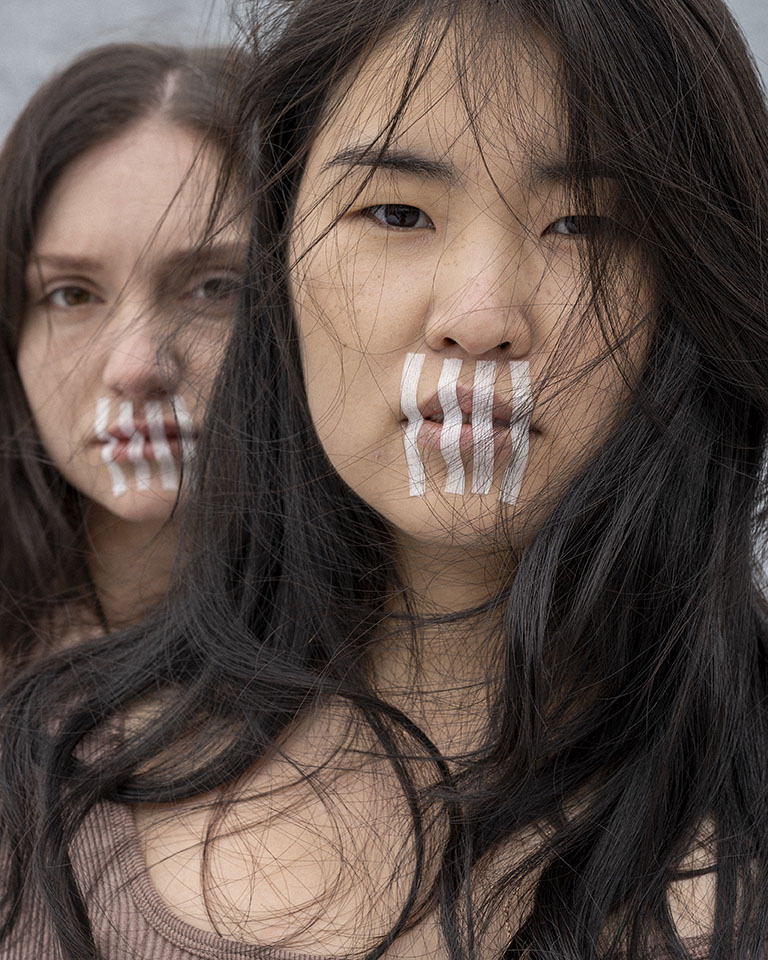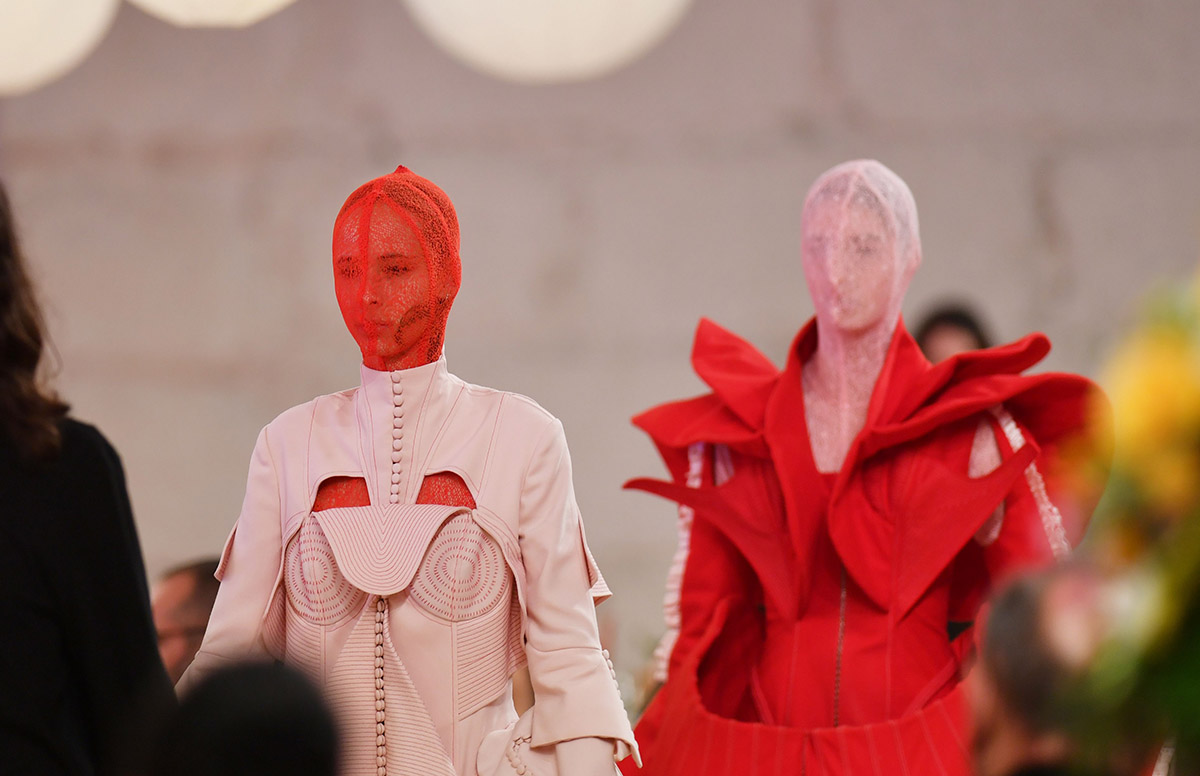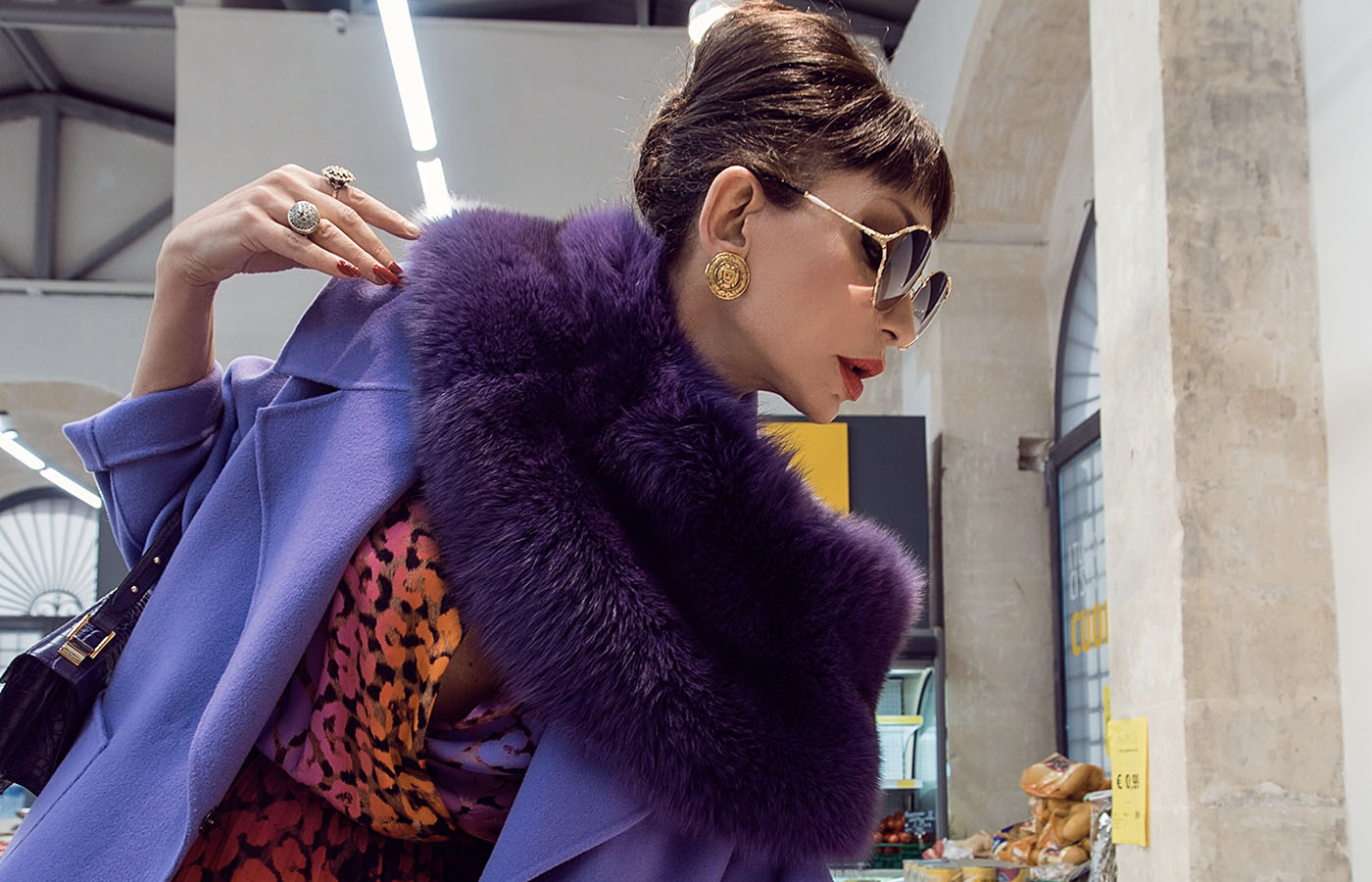ModaPortugal 2021 - A Fashion Event for the Future
Portugal has long been on my bucketlist. As an avid traveler and fashion enthusiast, Portugal’s long-standing history, distinctive culture, palatable gourmet and poetic cityscape fascinated me. After learning that Portugal is one of Europe’s major fashion and textile production countries, my desire to discover this beautiful country was fortified. COVID-19 sabotaged my two trips planned for Portugal; I thought it would be long before I could finally step onto her soil.
I’ve envisioned dozen ways to encounter Portugal, but little did I imagine myself lost in its beauty thanks to ModaPortugal. Held in Porto’s once-a-customhouse congress centre Alfândega do Porto, young fashion talents, fashion journalists and a panel of speakers formed by fashion professionals were welcomed to Porto for 2021 ModaPortugal event. The old town of Porto is mesmerizing. Narrow alleyways winding up the undulating hills, alongside, ramshackle dwellings closely aligned. Their colourful façades, adorned with wooden window frames and iron-latticed balconies are in decay. Churches clad in cerulean and white “Azulejo” tiles stand within, coated with exquisite religious paintings; they echo back to the prosperity of the country during the Age of Discovery. Under the beam of Southern Europe’s winter sun, the curtains of ModaPortgual rose.
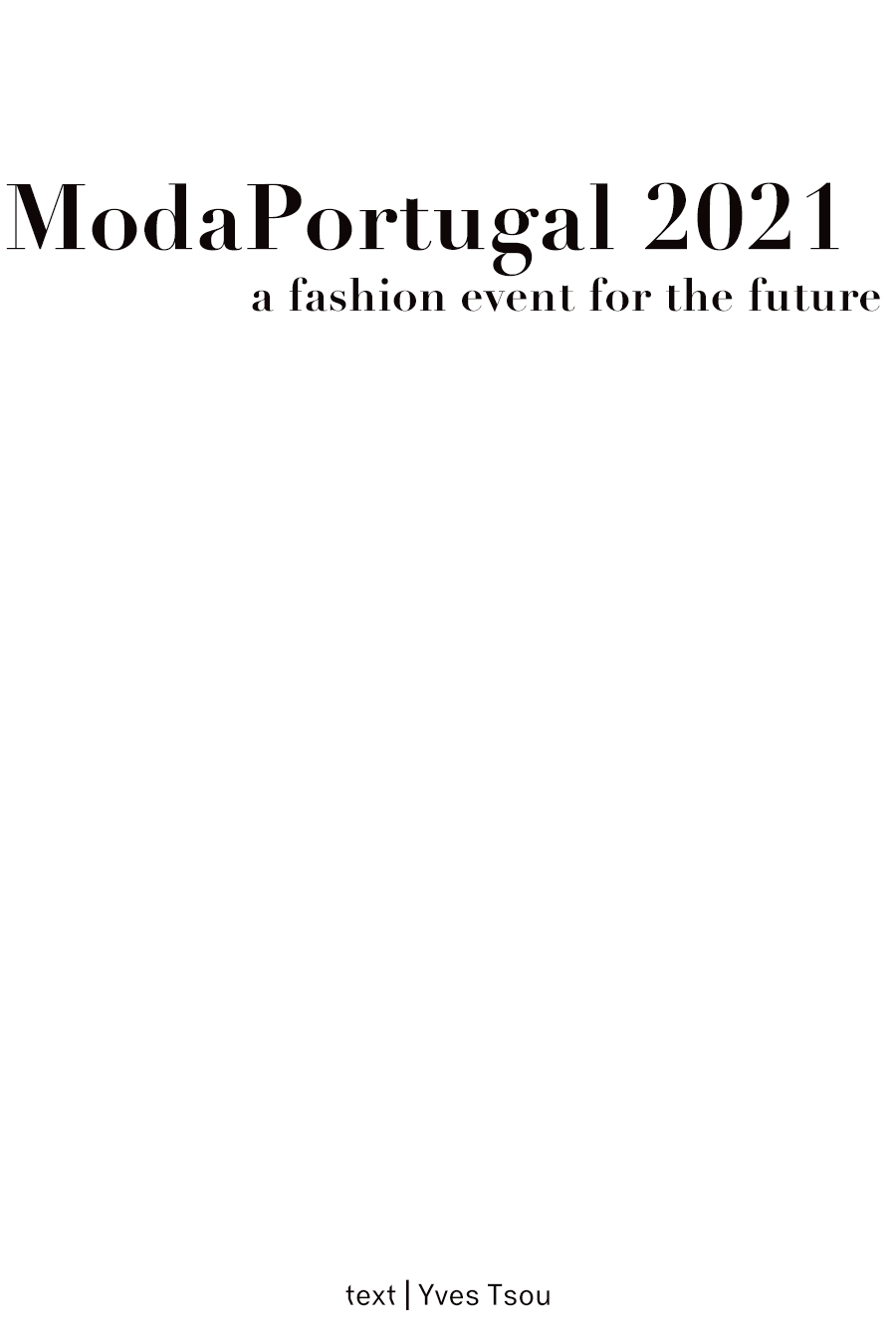
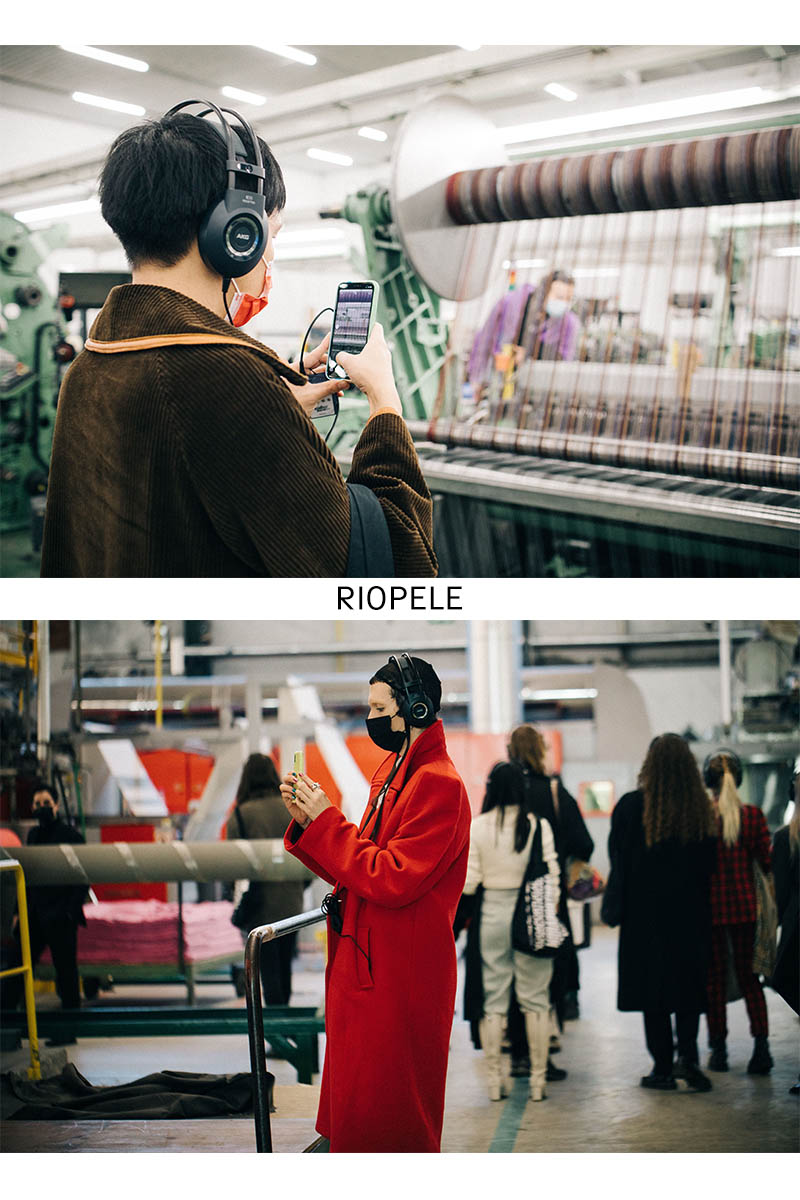
After a hiatus in 2020, ModaPortugal returned to Porto. Eighteen designers, hailing from six different countries (Finland, France, Italy, Switzerland, United Kingdom and of course, Portugal), gathered to Porto two weeks ago for the 7th edition of ModaPortugal Fashion Design Competition. These emerging young talents represent some of the most renowned fashion institutes across the continent. In their five days journey, they vied not only with their schoolmates and compatriots for the best collection of each country, but also for the “grand prix” that dedicates to the best collection overall.
To better understand Portugal’s robust textile and clothing manufacturing industry, ModaPortugal took these aspiring designers, along with panellists and my fellow press on an Industry Tour around the Northern part of the territory. Since the textile industry is one of the most polluting industries, the tour revolved around the initiatives that these textiles companies have taken in response to the environmental issues. The tour started with a visit to Riopele, an established factory with more than 90 years of history. Founded in 1927, Riopele is one of the oldest and most self-sufficient Portuguese textile companies. From spinning, dyeing, weaving, finishing to quality control and logistics, Riopele vertically integrates the entire fabric production cycle. Lately, Riopele has embarked on a new research: they collected the water consumed during the manufacturing process and tried to make use of it. 50% of the water consumption is now reutilized, successfully reducing the water pollution from their production process.
The tour continued with a visit to the family-owned factory of Pedrosa & Rodrigues, one of the most well-known jersey fabric manufacturers in Portugal. Pedrosa & Rodrigues blend jersey into high-end fashion; its clients include some of the major fashion brands in the world. Its newest movement is to collect leftover fabrics, grind them and spin new yarn out from them. This repurposing of discarded fabrics definitely makes the fashion industry greener and more environmentally-friendly.
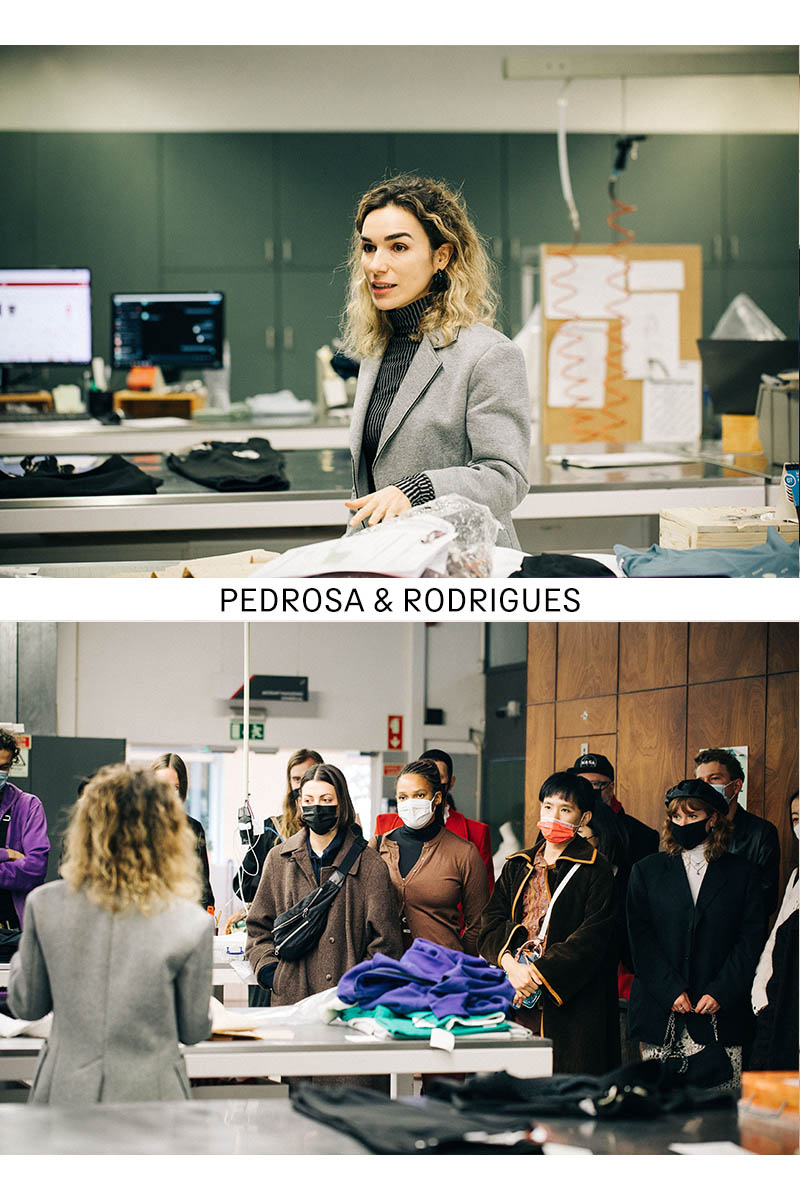
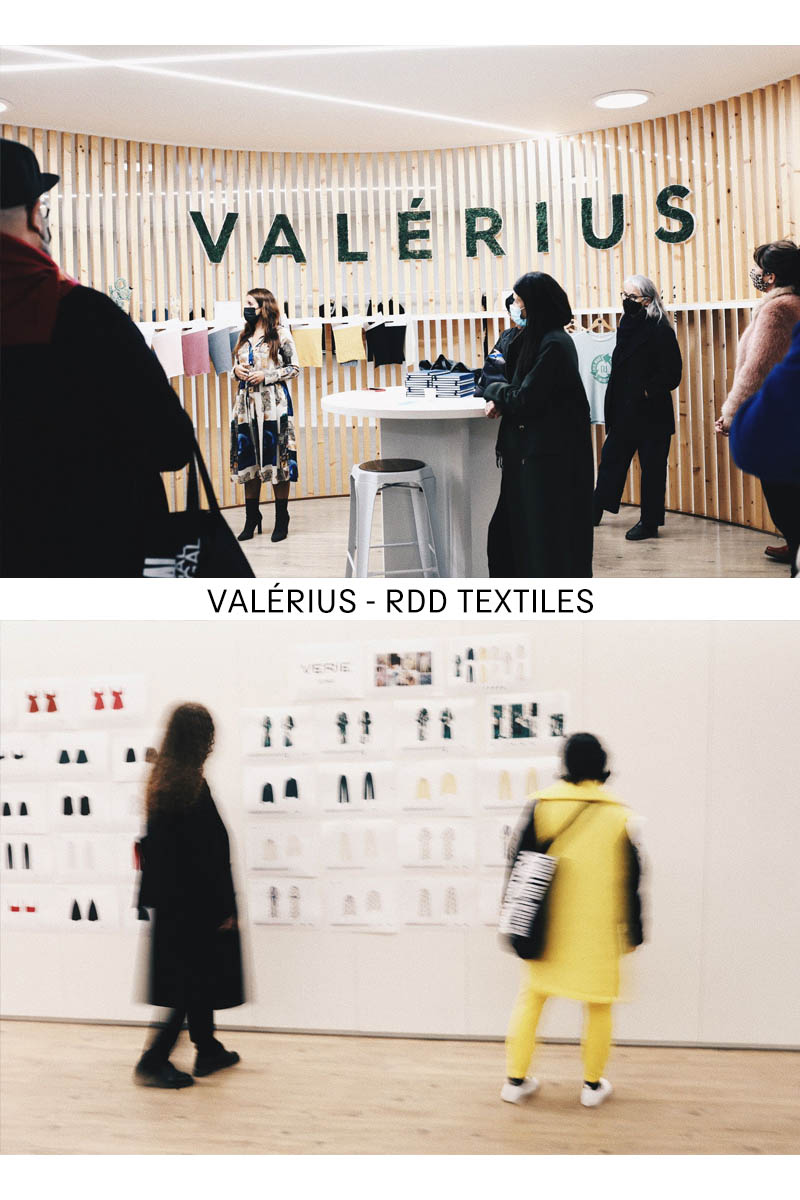
After learning a bit more about the innovative projects that traditional textile companies in Portugal have taken, we visited RDD textile and Valérius Hub, an innovatory research center focusing on the repurposing of used fabrics and the development of sustainability textiles. In 2019, Valérius Group launched a brand-new project Valérius 360 – a recycling centre that realizes the ideas of RDD Textiles and Valérius Hub. Here, the factory collects cutting waste, overproduced textile products, unsold stock and recycled fabrics from Côte d’Ivoire, Turkey and other European countries, making them into recycled-yarns, jersey fabrics and even garments. Together with Valérius Hub, Valérius 360 wishes to build a community that contributes to the creation of a responsible fashion system, reducing more environmental impacts and driving the industry towards a sustainable future.
After a day of repose, the designers ushered in their biggest challenge of this trip – The ModaPortugal Fashion Design Competition. The day started with the students taking turns presenting their collections to the jury. The event climaxed with a fashion show during dinnertime. Models stomped on the aisles in the banquet room. Grotesque or artistic, theatrical or intricate, they showcased these young designers’ flourishing imagination and creativity. Among them, Juha Vehmaanperä (Finland), Mathieu Goosse (France), Paulo Mileu (Italy), Tiago Bessa (Portugal), Claire Lefebvre (Switzerland) and Jessica Zhou (United Kingdom) won the best collection from the country they represented, with Tiago Bessa from Portugal snatching the Best Collection of the year, keeping the grand trophy home in Portugal.
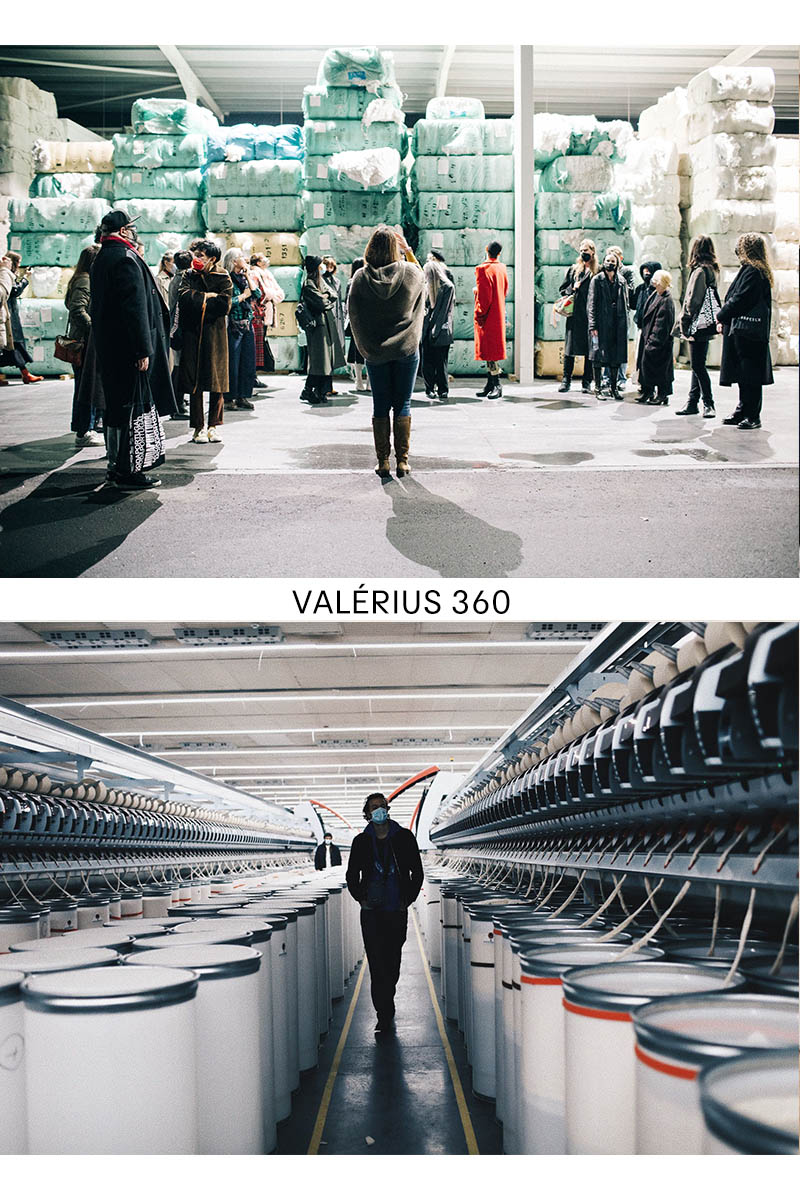
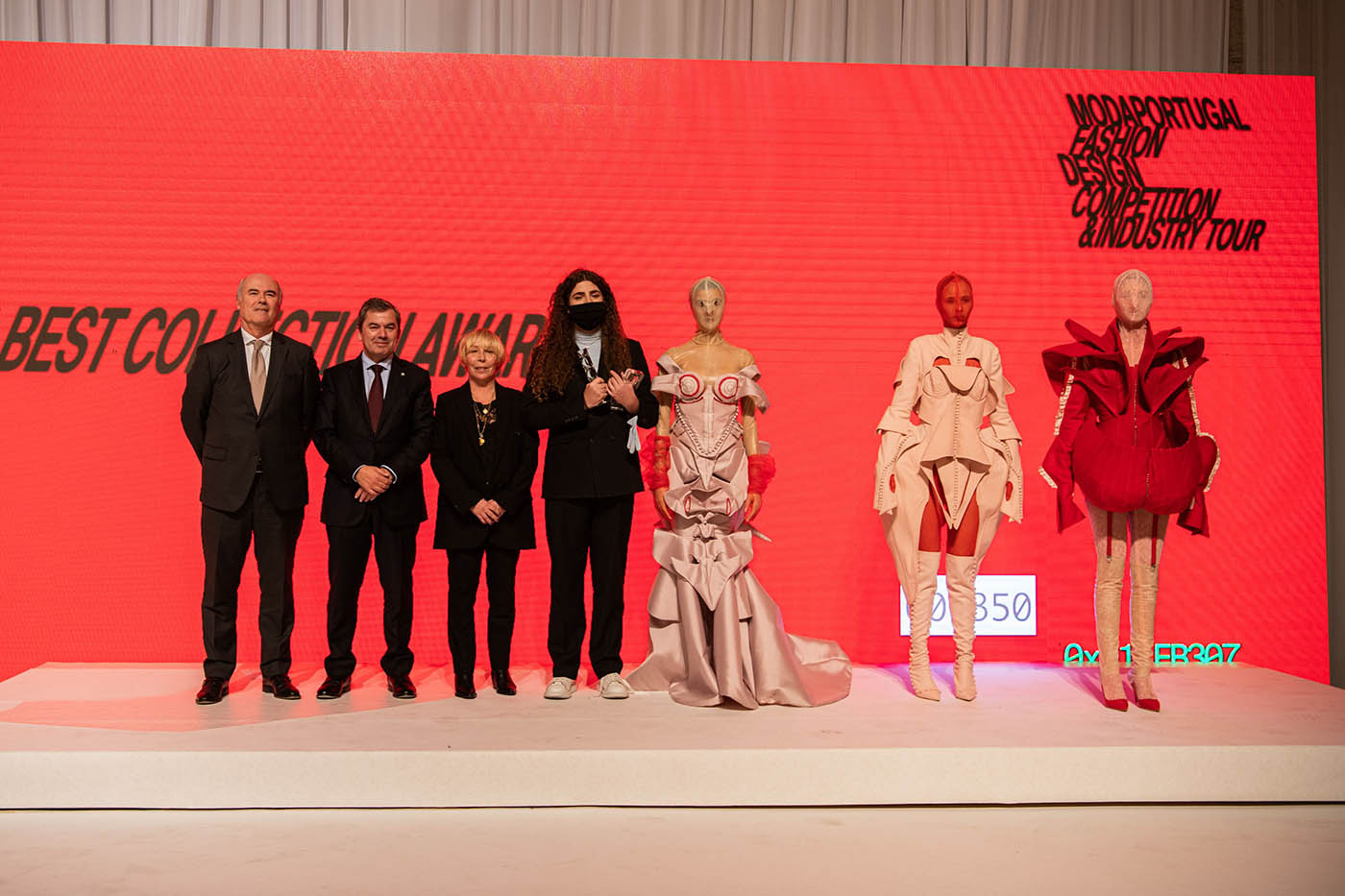
Tiago Bessa is the overall winner of this year’s ModaPortugal Fashion Design Competition
Looking back, I couldn’t imagine a better way to experience Portugal’s beauty and fashion all at once. It’s really impressive to see Portuguese textile companies taking initiatives on sustainability and eco-friendly fashion production, and to see the fashion industry supporting emerging talents. To summarize my experience at ModaPortugal, I think of the word “fascinating”. Porto’s view is fascinating, the “Azulejo” tiles on the church walls are fascinating, the serenity of the flowing Duoro River is fascinating; what’s more, It’s fascinating to know that even under an unfavourable macro environment, on the periphery of the European continent, a cohort of fashion talents is seeking to build a friendlier environment for the talents to come, and perhaps more importantly, for our Mother Nature.
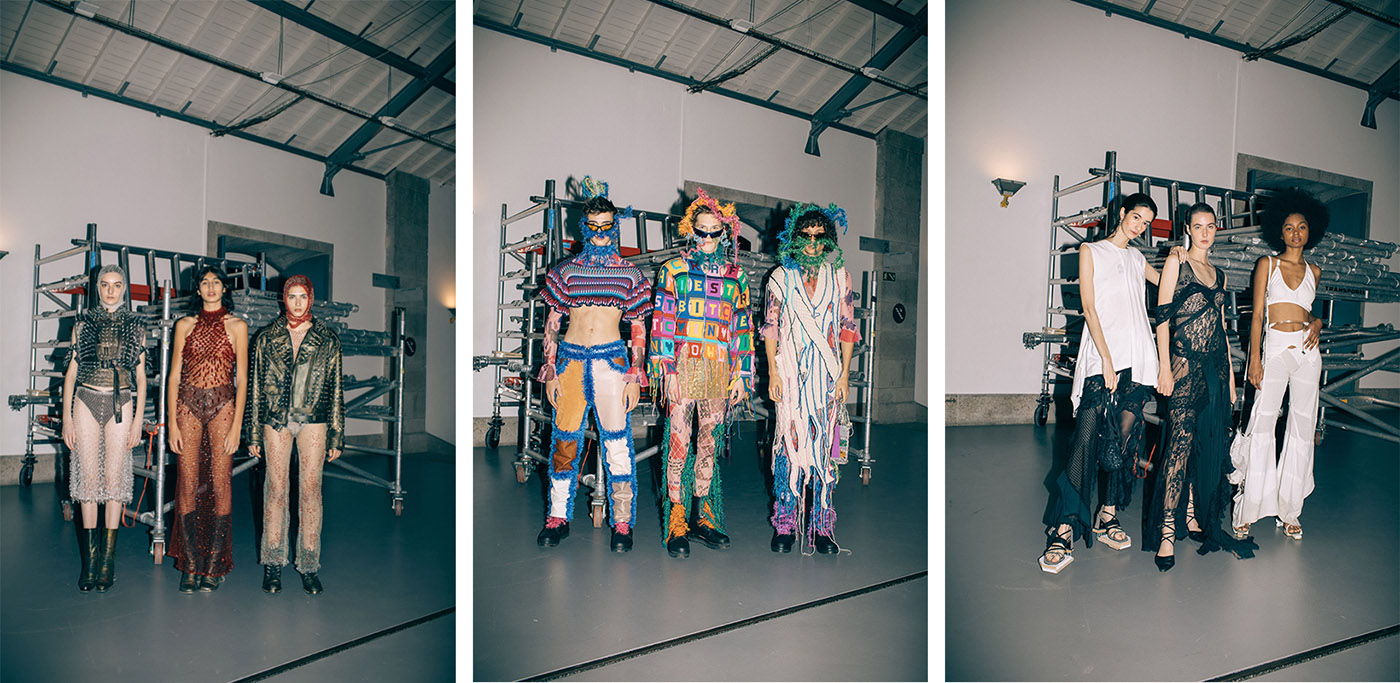
Finland | Jenny Hytönen, Juha Vehmaanperä, Sina Saavala (from left to right)
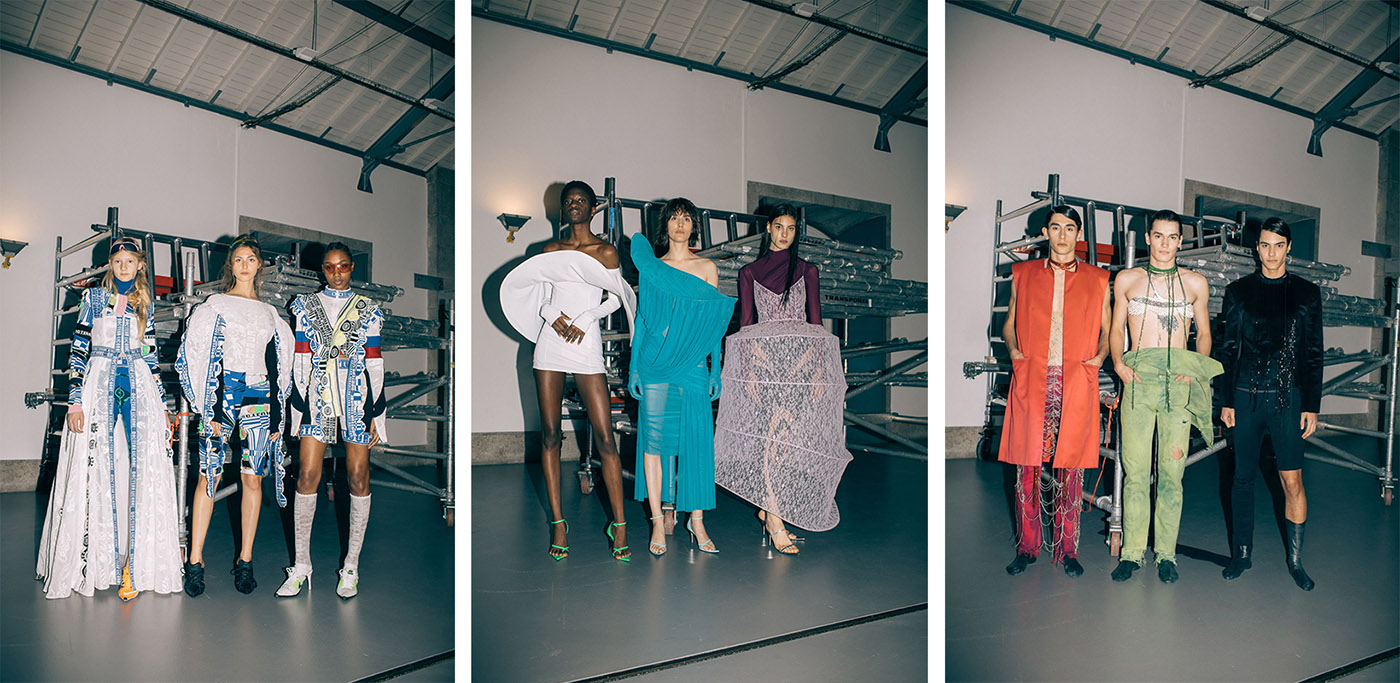
France | Albane de Saint Laurent, Jisoo Baik, Mathieu Goosse (from left to right)
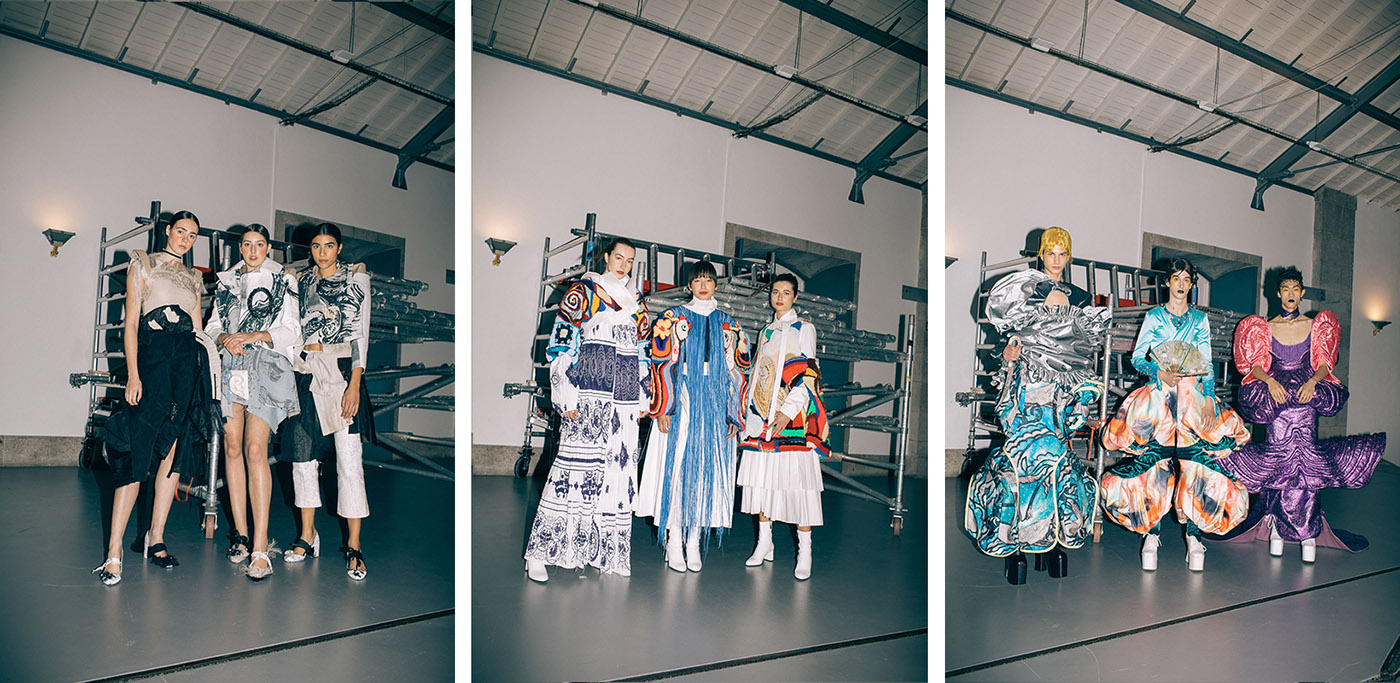
Italy | Alessia Dovero, Lavinia Jianqing Zhao, Paulo Mileu (from left to right)
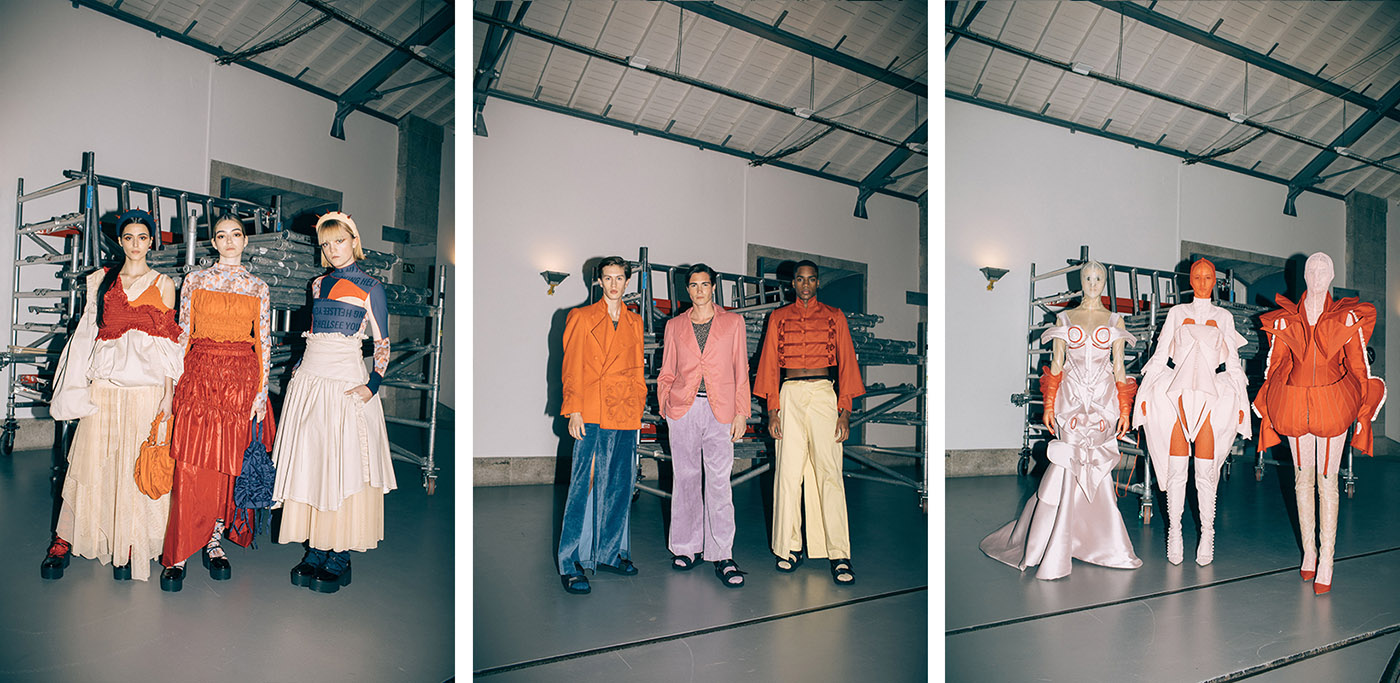
Portugal | Marta Costa, Nuno Braz Oliveira, Tiago Bessa (from left to right)
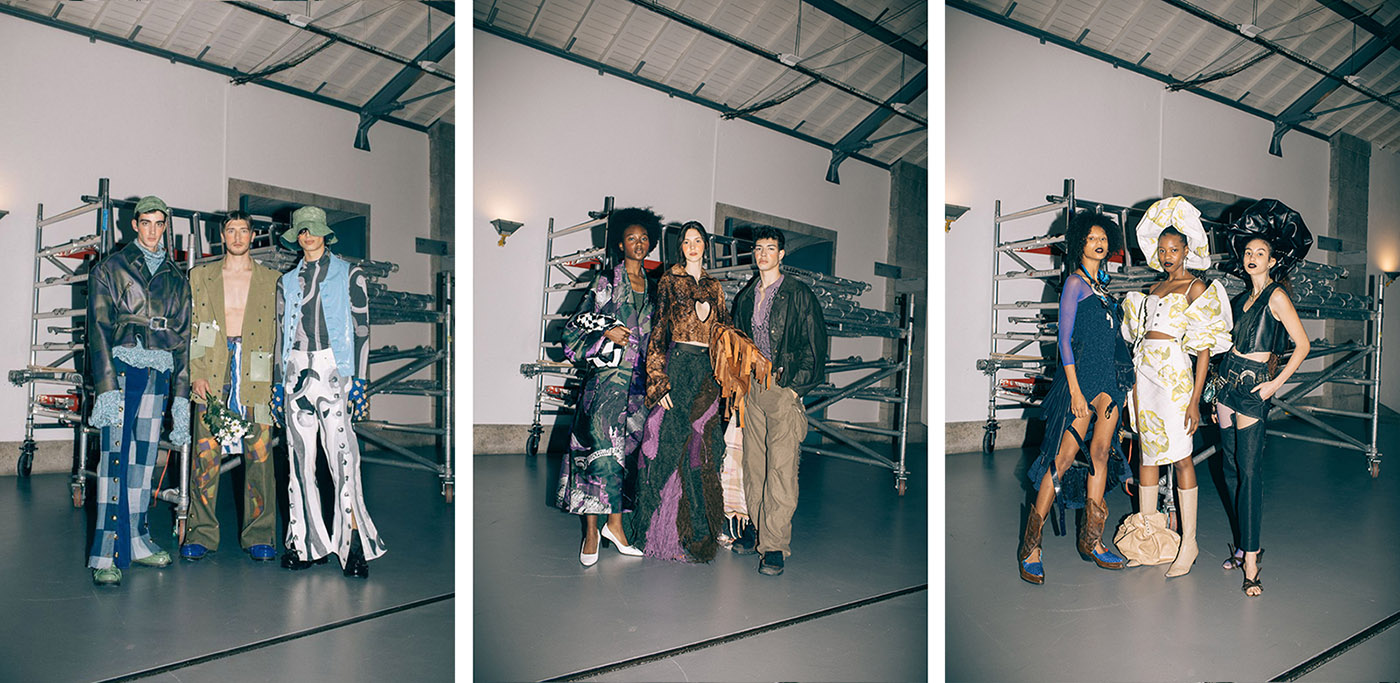
Switzerland | Claire Lefebvre, Morris Manser, Tara Mabiala (from left to right)
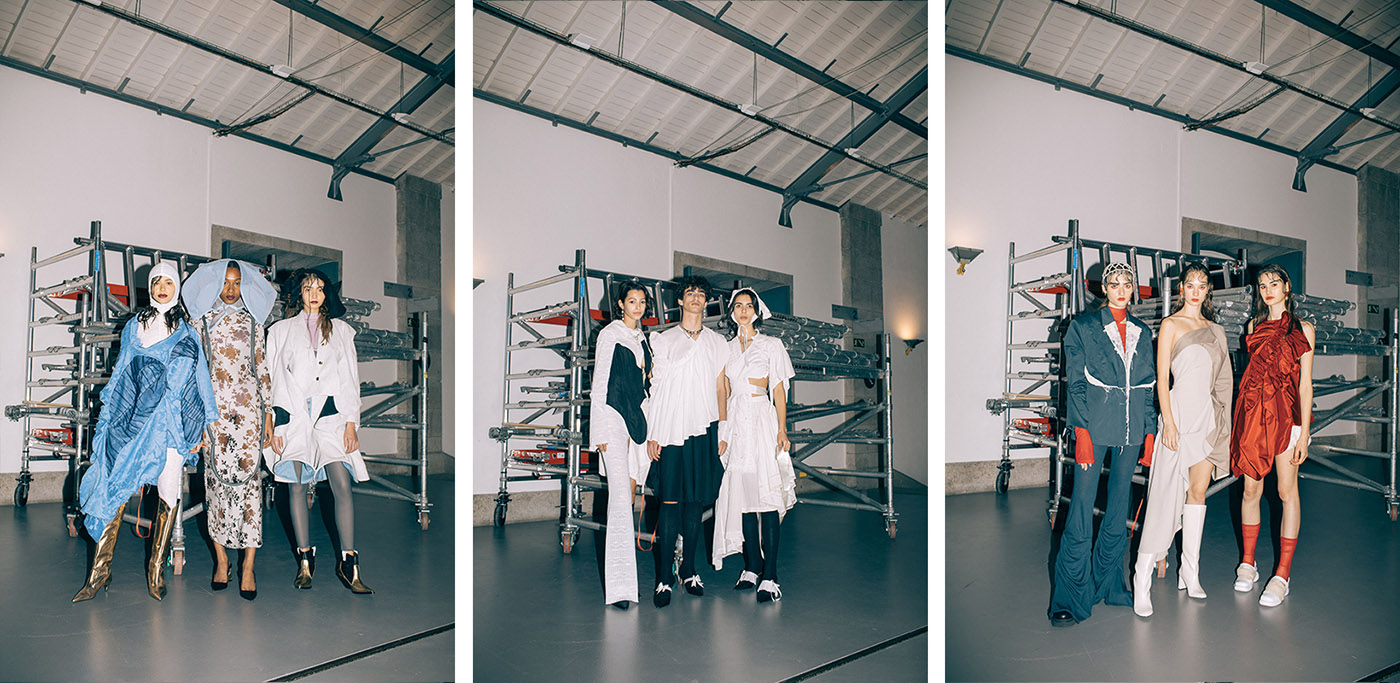
United Kingdom | ChenCheng Yong, Fionn Lucaya, Jessica Zhou (from left to right)
Text: Yves Tsou
Proofread: Mason Francis Palmer
Winter Magic: ISABEL MARANT x Mytheresa
Winter Magic
the Snow capsule collection by ISABEL MARANT for Mytheresa
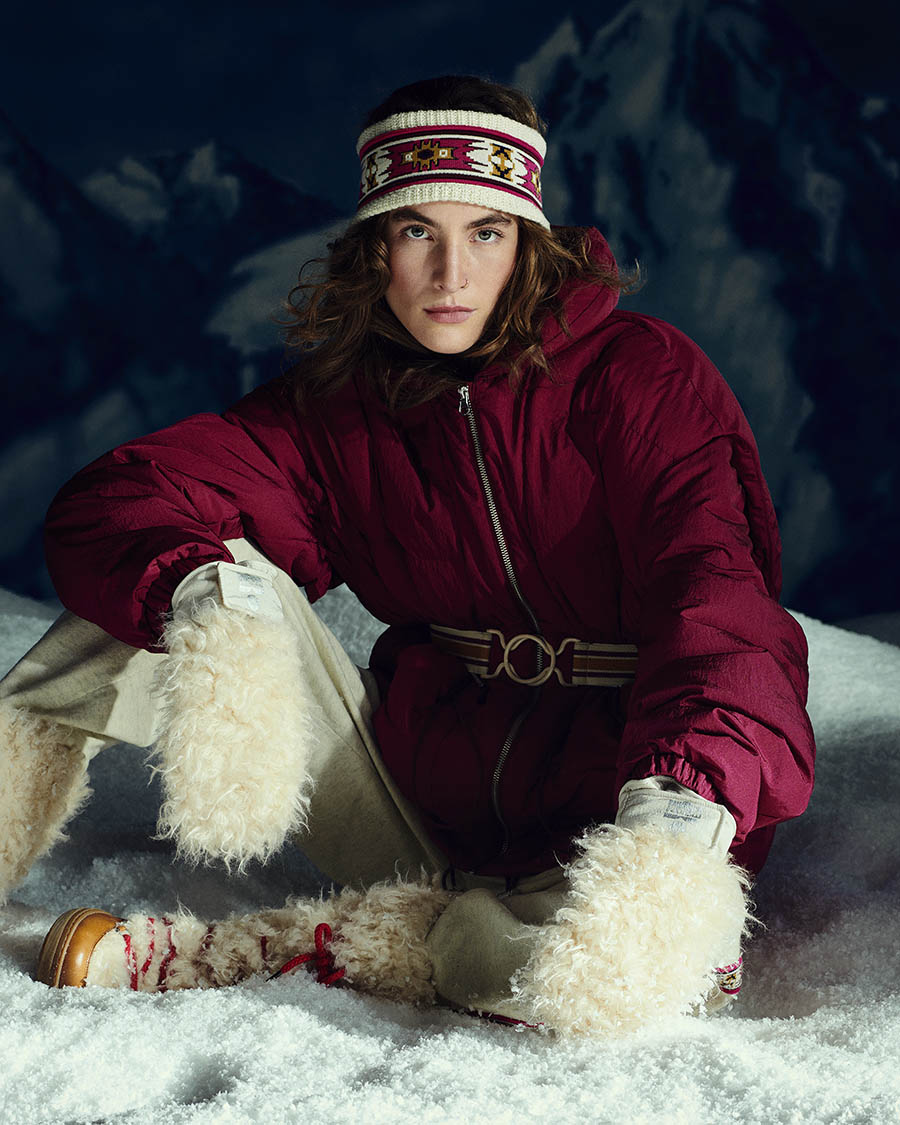
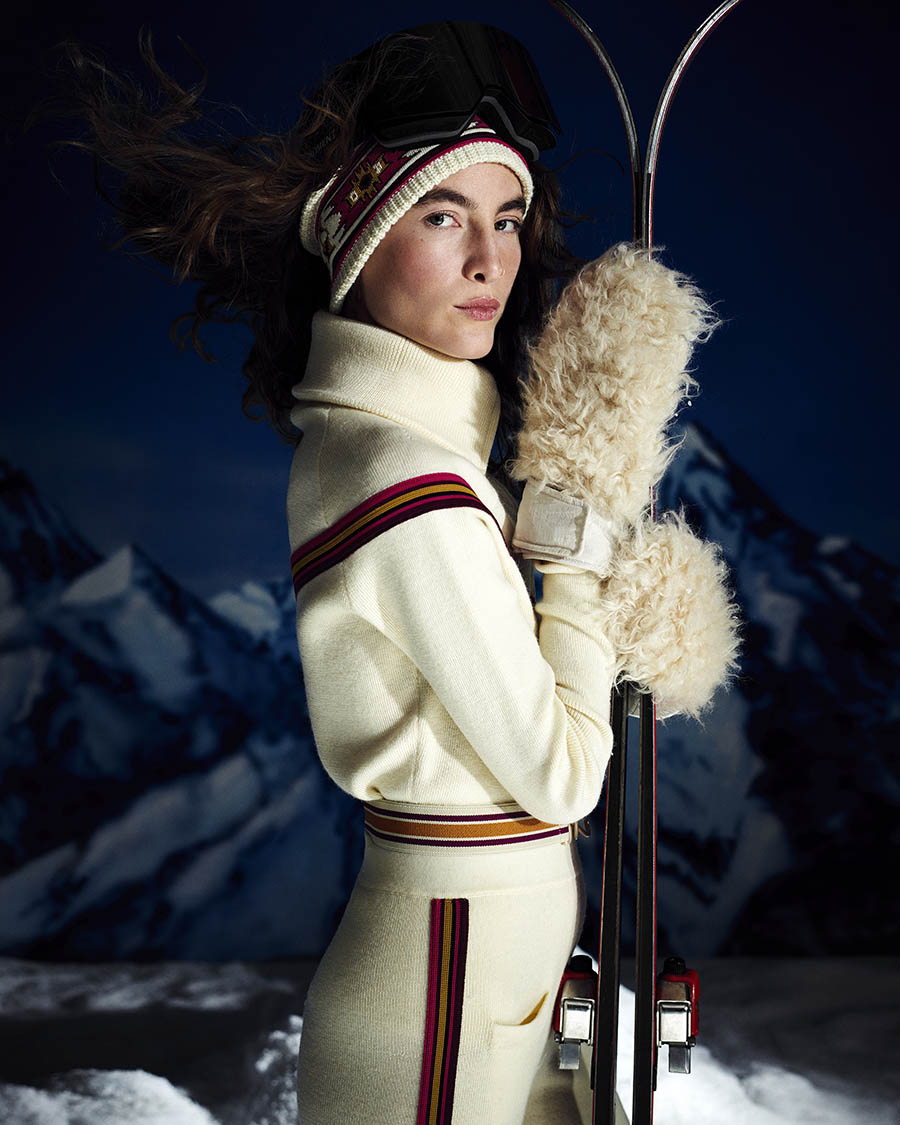
It is indeed good news for you ski lovers! Do you find it hard to complete the perfect functional look that keeps you comfortable and warm while staying stylish on the ski slopes? Well, this season the Parisian fashion label Isabel Marant and online luxury retailer Mytheresa collaborate on the launch of an exclusive Snow capsule collection, which would definitely be the perfect touch to your ski wardrobe.
The Snow capsule collection, available globally from December 8th, 2021, comes along with a dedicated editorial story. Directed by Mytheresa Chief Creative Officer Julian Paul and shot by noted photographer Ferry van der Nat, the editorial features world-renowned model Heather Kemesky. It represents the first time that Isabel Marant designs a Skiwear-inspired pieces.
The collection, composed of 33 garments, has one fundamental watchword: contemporary. The modern and functional design protects wearers from the cold weather without being out of trend. Overall, it makes skiing and spending a cozy evening in the mountains with your friends and family an easy and joyful activity to partake. The palette consists of beige, burgundy and yellow with metallic touches, blend poetically with the niveous landscape in a ski resort.
Taking a closer look at the collection. Three down puffer jackets: one in monochrome and two colorful catch our eyeballs instantly. Along with two pairs of ski-trousers, they are the perfect protagonists of our outdoor adventures. Indoor, the comfortable loungewear sets composed of beige braided sweater and trendy overalls, offer us coziness on a freezing winter night.
The accessories and the shoes from this collection are also not to be missed. Warm gloves and hats that match with scarf and sunglasses, a shearling vest with leather lining, belts and socks adorn the look in the chicest way. And to complete it, we have the shearling snow boots with red shoelaces, the white sneakers with beige on the toecap and velcro fastening or the high model in beige and metallic color.
Holidays season is around the corner, are you ready to be the trendiest skier on the ski trail? Visit Mytheresa.com website to check out the exclusive Isabel Marant for Mytheresa Snow collection, it’s time to shine in the snow.
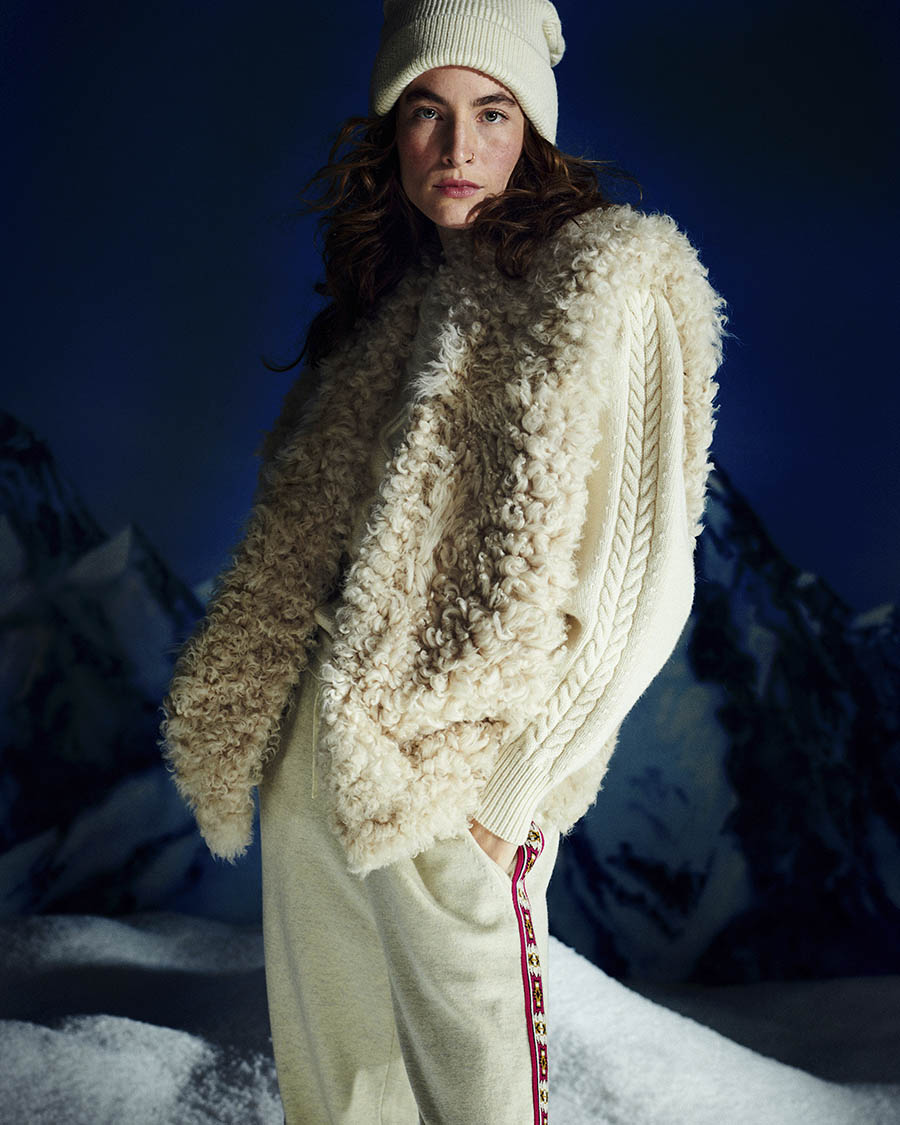


Text: Yves Tsou
School Night - Interview with Rand Faris by Dash Kolos
School Night
Interview with Dash Kolos & Rand Faris


On one scorching afternoon in late September, I caught Rand Faris, a talented young actress, who was born in the Kingdom of Jordan, then followed her heart and passion all the way to New York. We walked the streets of one of my favorite Brooklyn neighborhoods, shared stories, immigrant dreams, ideas and talked about our fears.


Dash Kolos: I know you just finished filming an important film, about a breakthrough New York Times story that helped launch the #MeToo movement. You got to work with a stellar cast and an amazing director Maria Schrader. How did it feel to be a part of such a strong female-led, female-written, female-directed project?
Rand Faris: It feels good to be a part of important stories, no matter how small or big the role is. Being an actor taught me to take in and appreciate every artistic experience. There is always a lesson to learn and experience to gain. I say this also as a reminder to myself, because as easy as it may sound, I find that challenging to live by.
Working with Maria Schrader and helping her realize a vision that is bigger than any of us was a great honor. This is a very important story told on behalf of so many women across the globe, so it is essential that is being brought to light – written and directed – by women. It was my privilege to be a tool in this storytelling process, amongst the female artists who are incredibly passionate about what they do.
You’ve been in the film game for quite some time yourself, what is the most apparent change you’ve observed in the industry and in yourself?
Dash Kolos: Well, in my opinion art is a reflection of us and the society. I think the most important change, that I see is happening right now, is the shift in storytelling. Who is telling the story is becoming as important as the story itself. This pivot in perspectives creates endless opportunities for artists and audiences as well. This is a recipe for fearless, honest and necessary filmmaking. As for my own personal change, I’d say, I’m shedding the desire to be liked and falling more and more in love with a very important set of words: “Fuck It/Off/That”.



Dash Kolos: Speaking of shifts, do you often get typecast? Moreover, do you think being something other than an American limits the possibilities of what people might see you as, or you find the opposite is true?
Rand Faris: Being an Arab woman in America can be limiting at times, but this also gives me many opportunities, like the film I just did. About half of the parts I get are the “Arab” roles. But, more often than not, with the stereotypical, “western” perception of what it is to be an “Arab”. What this creates is an unhealthy, unrealistic and unauthentic box. Therefore, we need more writers from the Middle East and more diversity in the writing room to break stereotypes across all ethnicities, races, gender, age – you name it! Just like you said – who is telling the story is crucial.
What about you? You originally from Russia, what are the perks and crutches of your ethnicity in the acting industry in America?
Dash Kolos: Look, I am happy to take on any role that comes my way. I genuinely love acting. But boxes have been around. They have been shifting shape and, I think, we are in the moment in the filmmaking history where they are starting to give way altogether. I do not yet see “Russian” characters in film or on TV that represent me, but then, I try not to live in a box and don’t allow anyone to place me in one. I believe we are all so freaking complex, but we do, unfortunately, see the world through the prism of stereotypes. And the media, film and TV played a part in it. The sooner we admit it, the sooner we can move forward and hopefully address this issue.
That was actually one of my fears – falling into one of those stereotypes and not living out my true potential.
What about you? What is your biggest fear as an artist? If you have any, of course.
Rand Faris: Oh I have a few, but I’ll save the other ones for a rainy day. Today we’ll mention the infamous FOMO. The fear of missing out…on the dreams that I’ve worked hard for and hoped for daily. It’s a possibility, it’s a 50/50 chance. I realize that. You either ‘make’ it or you don’t. You might end up living a very different version of your dream vision, or you might end up on a completely new trajectory, with new hopes and new dreams altogether. But in the current version of my dream I have a successful acting career, I write and create my own projects too. It’s about finding myself, finding my voice and growing through the experiences. My passion is still a burning flame.


Rand Faris: Speaking of finding your voice, what is the most recent lesson you’ve learned or realization you’ve had as a multidisciplinary artist?
Dash Kolos: Good question! With everything I have on my artistic plate, I am learning to trust myself more and more. Getting rid of doubts have been a significant challenge. Not allowing any discouragement into my world as well. It feels like I am putting together this enormous puzzle, but when the pieces fit, they fit perfectly. My photography helps my writing. My writing motivates my acting. My acting informs my directing. My directing fuels my photography. You get my little artistic circle.
How about you? What would be the lessons you’d share and advice you’d give to a teenage artist who is about to follow their heart?
Rand Faris: It’s all definitely about the journey, not the destination. The older you get, time will magically start to fly faster, so enjoy your ride and make stops at different points along the way. Some might be pleasant, some might be educational. Work hard of course, because the effort you put in plays an essential role – no hard work goes unnoticed. Celebrate every milestone, appreciate every sunset you get to catch, notice things that move you, embrace every experience – good and not so good. These things essentially fill your heart with life, and a full heart is the most important ingredient in success. A full heart will guide you in the direction that is right for you. Oh and PATIENCE! HAVE PATIENCE CHILD, or else this journey will be strenuous and you might overlook your accomplishments. And last but not least, it’s okay to have doubt, fall into funks, or wake up in your mid-20’s wondering about who you are and why you’re doing what you’re doing. Nothing is set in stone, and nothing should be. If you have a change of heart, don’t be afraid to follow it.
Oh and learn how to take your own advice, I’m still trying.




Talent: Rand Faris (@farisrand)
//
Photography & Interview: Dash Kolos (@dashdizzles) dashkolos.com
Text Revision: Paul Ulukpo
Film Developing and Scans: The Color House New York (@thecolorhousenyc)
The Art of Being Unapologetically Black - Muzi and his Kingdom of Music

It was a mild September’s afternoon. Milan had finally cooled down a bit from the blistering heat. Sat in a corner window seat, I ordered a cup of iced coffee, waiting for this impending interview with Muzi. I adore Muzi’s music. He is without a doubt a music wunderkind. At the age of 30, he is already one of the most venerated and talked about musicians in South Africa. He has recorded and produced 4 albums, played several DJ sets in Berlin, done some overseas tours and has even graced the soundtrack of the sought-after Spanish Netflix drama “Elite”. His fine mixture of traditional African music and contemporary electro-techno sounds is beyond avant-garde. Wanting to immerse myself more into his musical approach, I tuned into the tracks from his latest album “Interblaktik” while waiting. With his upbeat African rhythm and overwhelming techno beat, the ever-lasting sweltering summer in Milan seems not to be so unbearable.
Hi Muzi, how are you? Where are you right now?
Hi, I’m good. Thanks. Right now I am in Johannesberg, South Africa.
How’s the weather there in Johannesberg?
The weather here now is so beautiful. Yesterday was really humid and hot but today the weather is so nice. Clear sky, pleasant breeze…
Same here in Milan! I am glad that the weather is nice today on both our ends, and that we could have a delightful conversation in this pleasant weather. I would like to start it with your very iconic stage name “Muzi”. It is actually an abbreviation of your full name, right? What’s the meaning of it, and is there any interesting story behind?
Muzi is short for Muziwahke; the literal meaning of it in my mother tongue Zulu is “Your home” or “Your house”. However, there’s a deeper meaning behind it, which is the person who builds his/her own house or kingdom. So if you look at my career, I actually live up to my own name – I build my own kingdom of music. Also, Muzi sounds like music. It’s not only an abbreviation of my name, but also a symbol of my passion and my career.
That’so cool! I think it perfectly explains the reason why we are here today – to talk about your music kingdom. Earlier this month, your new album “Interblaktic” had proudly joined your kingdom of music. What do you want to bring to the audience this time?
I guess my whole mission is to do modern African music, and take it onto the world stage. As you can see from the name “Interblaktic”, I have this vision to pretty much concoct a sort of world + African music that is made in South Africa.
Interesting! What are the African elements that can be found in your music? Do you only extract elements from traditional South African music or also from other types of African music?
Primarily, the elements were extracted from South African music, but the more I travel, the more I get to experience other types of African music. Even in South Africa, we have many different ethnic tribes. I am Zulu, and traditional Zulu music is a part of my identity. I grew up in a household that was imbued with dance music, so I started to mix it into traditional Zulu music. The more I grow, the broader my horizon is. I started to meet people from other tribes, whom I learned about their music from. I then took their musical elements and flipped it into other genres that I like, such as dance music, Chicago house or Detroit techno. I feel like I am connecting the dots between different tribes, with an electronic alternative sense.
What are the characteristics of traditional music from other South African tribes, other than Zulu, that we can find in your music?
In traditional Zulu music, you can hear heavy drums beating, a little bit like the taiko in Japanese traditional music. Xhosa people are good vocalists; they specialize in very deep vocal. Traditional Tsonga music involves a lot of instruments such as castanets, claps and shakers that resemble Mexican/Spanish music. I also take some Fela Kuti’s Afrobeat elements and mix them with my music. I want to break the boundaries between different tribes and cultures through the power of music.
Aside from traditional African music and the electro-dance music that you fancy, what are the other influences in your music-making?
I watched Disney’s animation “Aladdin” many times when I was a kid. I am fascinated with the traditional Arabian music; therefore I added a hint of Arabic music into my music. You can hear it in my track “Tjuu Wena” from my latest album “Interblaktik”. Also, culturally, hip-hop has a huge impact on me. I love a lot of Hip-hop music, also R&B, alternative rock and even pop music.


Are there any other types of musical elements you’ve never used before that really intrigue you or perhaps that you’d want to incorporate in your future music?
If you listen to all my music, you’ll find out that actually I like leaving clues for the following project. This time the hint I left is that I would love to create a Disco album in 2021 that sounds like those in the 60s and the 70s.
That sounds promising! Can we expect it to be released anytime soon?
Probably another 5 years or so (laugh)
(Laugh) But it seems like you are quite prolific! You’ve released 4 albums since 2016. One thing that I am quite curious to know is about the track “Boom Shaka” from the eponymous debut album released in 2016. It was featured in the popular Netflix TV series “Elite”. What was your thought when the team of “Elite” reached out to you?
I am always grateful when I have opportunities like that. The thing that makes “Boom Shaka” unique to me is that it’s a creation of how I felt; and I had loads of feelings at that time. That was when I was living in Berlin; I guess I was angry and frustrated with a lot of things, and the rebellious attitude is completely projected in the album. I think it was an odyssey of finding myself, and that’s why it is special for me. After that, I came back home to continue pursuing my music career. Indeed, it is a project that I am super proud of, especially with the grace of “Elite”.
After “Boom Shaka” you released the album “Afrovision”. It is a very interesting title, but what’s the perspective of Afrovision? What kind of vision do you wish to convey through this album?
It was more like my vision where African music can go. Sometimes it feels like the rest of the world sees Africa in a very one-dimensional way. They consider Africa or African as a collective term. But there are so many countries, so many different cultures and different flavors of music on this continent. I would just add my vision of Africa into my music. So for those who take Africa as one-dimensional, I want them to realize that Africa is actually way more diverse than how they thought, and there is actually so much going on here that they don’t know about.
And as for this latest album of you, “Interblaktic”, is there any story behind the production and the concept of this album that you would like to share?
Production-wise, I learn new things sonically by mixing traditional music from different tribes with contemporarily electronic music. Conceptually, it’s an album talking about how my ego dies. So when you listen from track #1 all the way to track #16, you will discover the changes in my mindset. Track #1 “Interblaktic” shows a very confident, “I don’t give a damn” attitude. As the album unfolds, you will listen to a story of me trying to get a girl I like (Track #13, Tsi) and how she broke my heart but I still love her (track #14, Fool’s Love). And in the end, it left with the truth that, regardless of what has happened, I still love music.
And what visions do you have in this album?
I guess the vision is similar to all of my past albums. So if you look at my latest three albums – “Afrovision”, “Zeno” and “Interblaktic”, they form this triangle. All the tracks are almost like cousins, and “Interblaktic” is the brightest version amongst them.


Oh! So “Interblaktic” is actually the brightest of them all?
In terms of albums, Yes! So “Afrovision” is a man starts to realize who he is. “Zeno” is the sweet burden of taking care of a kid, and the mindset of me and my kid versus the whole world. And in “Interblaktic”, I realized that actually I do care about people and stuff like that. Literally, it’s also like a process of how my ego dies.
Do you really have a kid?
Yes! In fact, Zeno is the name of my 3-years old daughter.
One thing that I find quite interesting is that, in the intro of the track “Interblaktic”, there’s a line “There seems to be a lot of black people on Mars”. What’s the message behind this that you would like to convey?
When I was writing “Interblaktic”, I started to feel like “You can’t just be black. You can’t be yourself”. So I started to imagine “What if we are in another planet but still under the same prejudice on earth?” The whole intro of “Interblaktic” says that there is “a problem” here; someone is complaining that there seems to be a lot of black people on Mars. Even when we go to the Mars, there will be people complaining about our existence. So the song is pretty much about being unapologetically black.
I guess self-identity is one of the most important things after all. Thank you so much for sharing such interesting insights with us. Before leaving, would you like to tell us about your future plan?
I think my future plan is obviously to go on a tour. I’ve done a US and Europe tour before, and it was quite successful. I would love to do it again. Also, I want to launch a clothing line.
We'll Be Okay
















Photography & Art Direction:
Loreen Reschke (@loreenreschke), Maximilian Schwarz (@mximilianschwarz)
Assistant:
Tatjana Hackenberg (@tazsoph)
Models:
Juan Geck (@thatsthejuan), Lasse Graubner (@lasse.gc), Rim Dudek (@rimdudek), Dominik Auer (@heyitsnikx), João Falcão Alves (@joaofalcaoalves), Germann Betke (@gerabetke)
La Déglingue


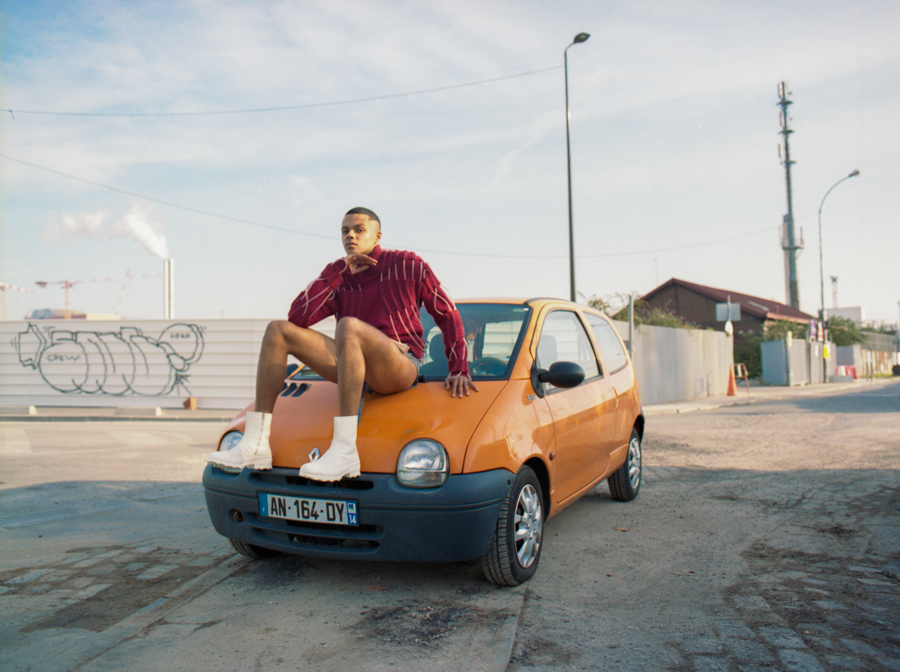
red knitted jersey, jean short QUAZAR
La Déglingue is a series that documents the scheduled disappearance of old cars in the area called Grand Paris.
Grand Paris is an infrastructural mega-project that spans over the city of Paris and the neighbouring districts. The fast-paced modernisation of the territory in question includes reform plans such as the metro grid expansion, the multiplication of cycling lanes on every road and an overall greener transportation network.
Along with these reforms, last year, the Council of Grand Paris enforced a progressive ban of diesel-engined cars older than 2003, for they are deemed too polluting.
In the coming years, as intended by those who want a future bereft of cars for Paris, more cars, old cars, gasoline-powered cars, will vanish from sight.
La Déglingue aims at photographing one last time these beloved cars before bidding them farewell in the name of a more modern modernity and a greener future.
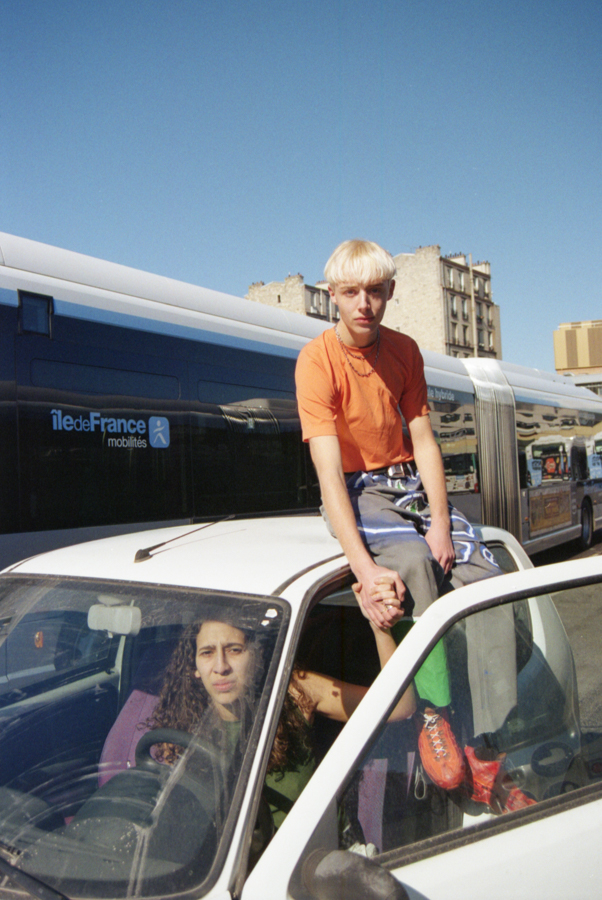

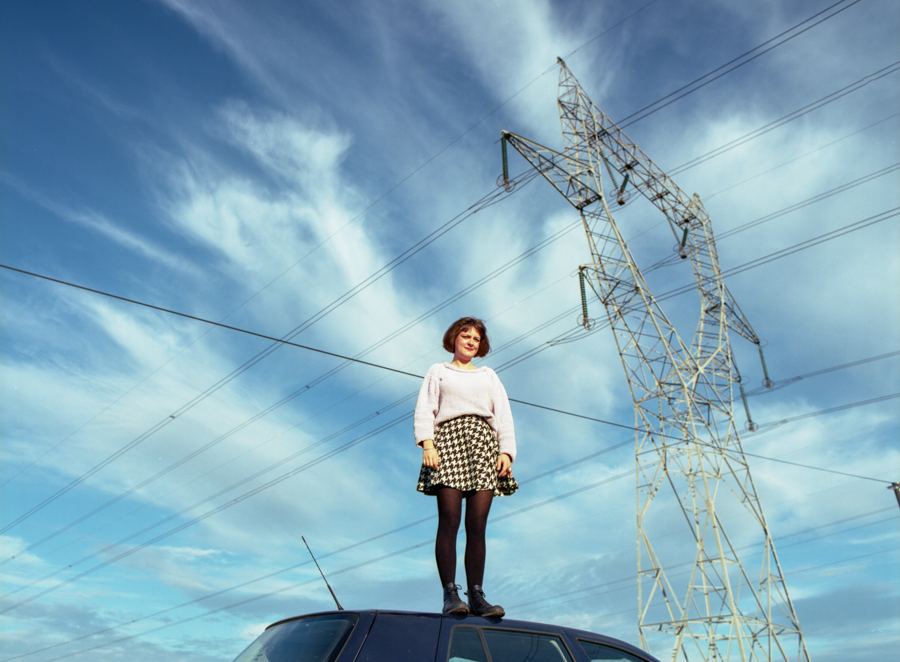

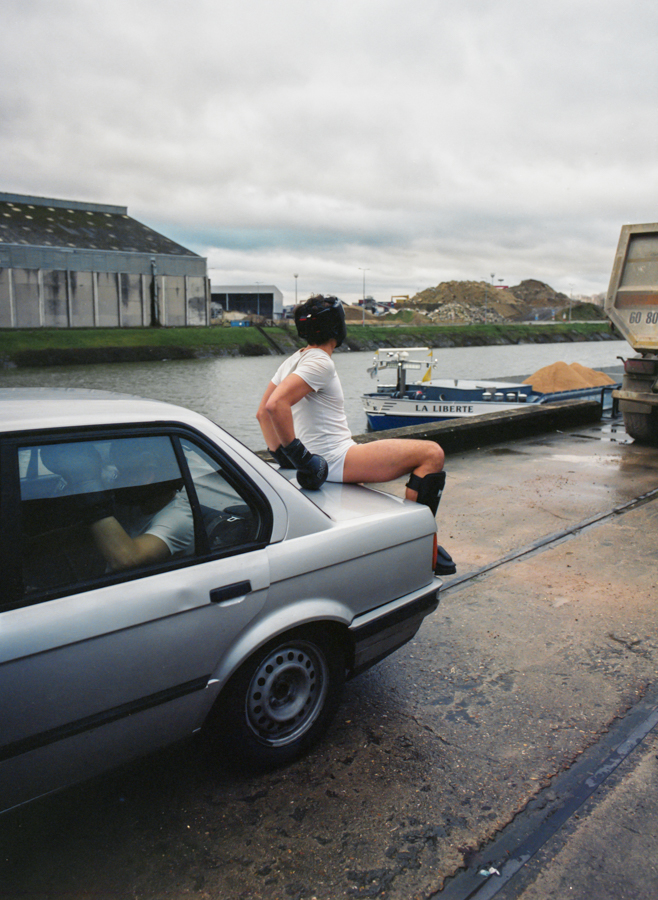


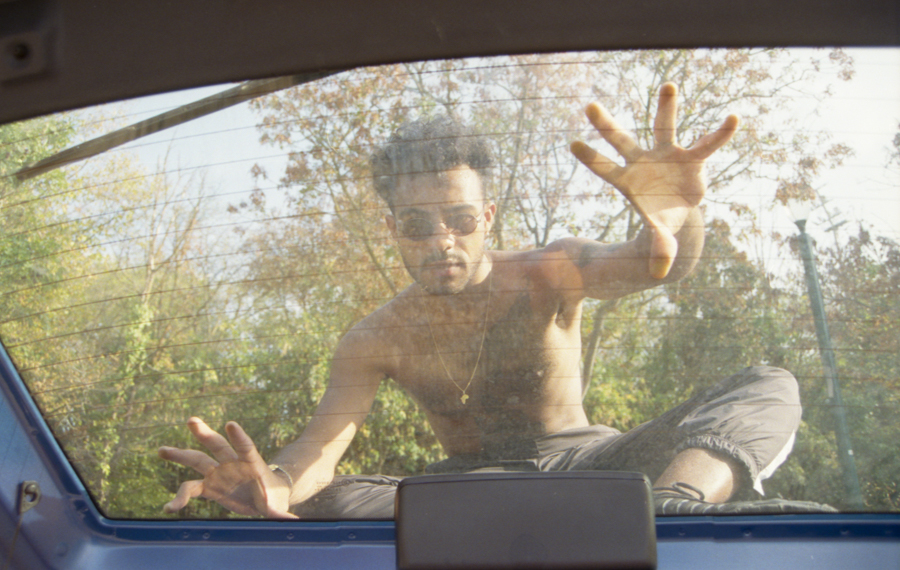

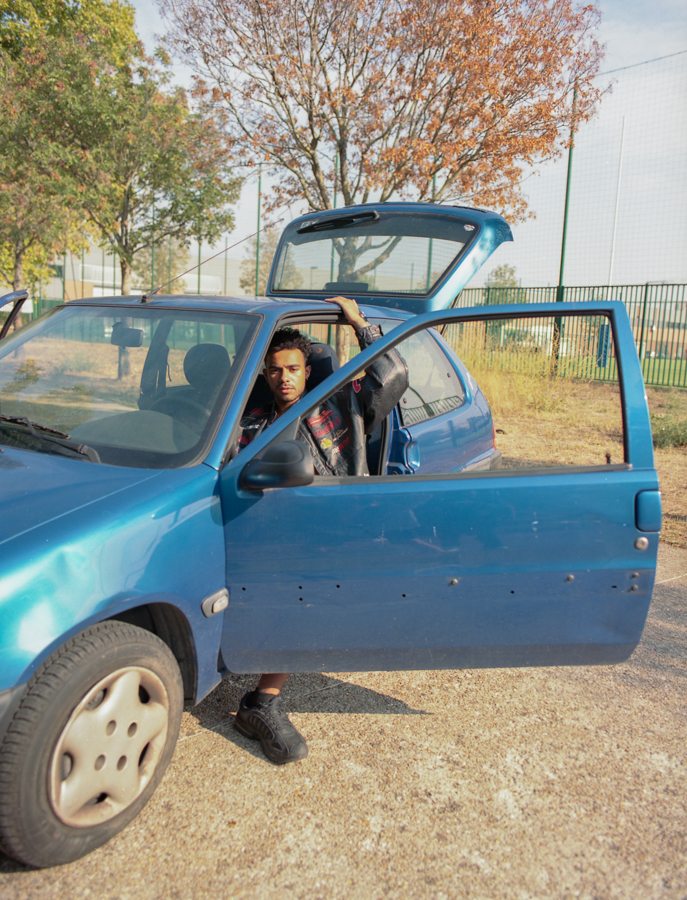
Photography, Art Direction & Fashion: Maxime Michelet (@maxime.michelet) maximemichelet.com
Models : Malick (@malick.bgr), Selma (@selma_name), Costa (@costabrou), Garance, Baptiste, Bastien, Rémi (@remi100famille)
Berlin Commercial 2021
Grainy, psychedelic, and somber. From the prowess of FKA Twigs in her pole-dancing performance and the roll of marijuana cigarette for Billy to unwind to in 2019 to the visitation of porn performers to a minor’s home and the eye-less society before registering for a new credit card and a fresh pair of eyes in 2020: Berlin Commercial celebrates and curates the state-of-the-art filmmaking, this time for the third year starting August 10 until 14 in Berlin.
As CAP 74024 speaks with Philipp Ulita, the festival’s Managing Director, he unveils how the global community of creatives keep seeking to create timeless and universal experiences through moving images, the extension of the theme The Age of Collaboration, and the reason behind its doctrine of highlighting mind-bending ideas, emotionally engaging stories, and well-crafted execution.

2019 Berlin Commercial Music Video Marbled Pick One Title Holder: FKA twigs – Cellophane

2021 Berlin Commercial Commercial Work Shortlisted: Burberry – Festive (Directed by MEGAFORCE)

2021 Berlin Commercial Commercial Work Shortlisted: Monza – Monza (Directed by Simon Gustafsson)
Hi Philipp! I hope everything’s well. Commenting on the new edition, you mentioned that you were building a community of talented creatives with similar values and mindsets. What are these mindsets and values? How do they help build a more inclusive community and growing audience?
Berlin Commercial’s network consists of people who are constantly looking for new ways to express their own visions and always managing to include others in their passion, professionalism, and interpretation of work.
It’s natural to adopt mindsets and values where we always strive for the best and highest possible standards and constantly stay open to new ideas while working with the tools at hand to create timeless and universal experiences, pushing us forward collectively as humans and culture.
These are the foundations of our creatives’ works and projects, which are the same for the festival that serves as a platform for all these whip-smart people out there. Every year, we’re more than impressed curating the submitted work. The films deserve to be showcased in an adequate manner; that’s our job. Inclusive communities and growing audiences happen if something is done honestly and continuously.
Thank you for highlighting your values and mindsets! These related to what Berlin Commercial takes on, which is the ongoing visibility and easier access to creative talents and revolutionary storytelling. How do you define revolutionary in storytelling, and why do we need it in our video content?
Well, the creators don’t compromise. They have a knowledge of film language and aesthetics, and take inspiration from all possible sources: high art, fashion, photography, literature, and on the streets. Equipped with a natural curiosity, they use and share their skills for the greater good. This persistence alone is revolutionary. You can easily spot a copy-paster. Why do we need original and straight-forward video content? Because anything else is boring and brings us nowhere.
Right! When you mentioned that anything else was boring and brought us nowhere, it reminded me of the event’s doctrine, which lies in ‘highlighting mind-bending ideas, emotionally engaging stories, and well-crafted execution.’ Why do you search for these ideas and what do you aim to convey to your audiences?
Being active across different media landscapes and styles means being able to select the right inspiration for the right moment. Sometimes, it’s a puppy video; sometimes, it’s something more provocative. There’s a lot of content out there asking for our attention. What we provide is a highly curated selection of films and people involved. Just look at our jury line-ups and guests. In the end – next to all the glam and fun aspects – awards give structure, orientation, and open up new possibilities to connect with other creators and audiences.
Speaking of connecting with other creators and audiences, the new edition launches an Instagram channel to provide visibility to culturally relevant video content all year round. It also becomes the medium to connect with the global audience. How and why did the transition to a social media platform occur?
It’s more of an extension than a transition. We still have all the nominated films featured on our website. The new instagram channel has some benefits that a website doesn’t have. The main one? The handling. You can link all credits to the personal accounts and you can swipe from top to bottom and films start playing right away. No loading time – just an immediate effect. You can share your film as a business card, you’re featured next to other outstanding projects, and if you’re using it on your smartphone, your remote control is simultaneously your viewing device. Long story short, visibility is key and again, the films, being stimulating as they are, deserve every view and like they can get!

2021 Berlin Commercial Commercial Work Shortlisted: Christian Louboutin – LOUBI AIRWAYS (Directed by Victor Bastidas)
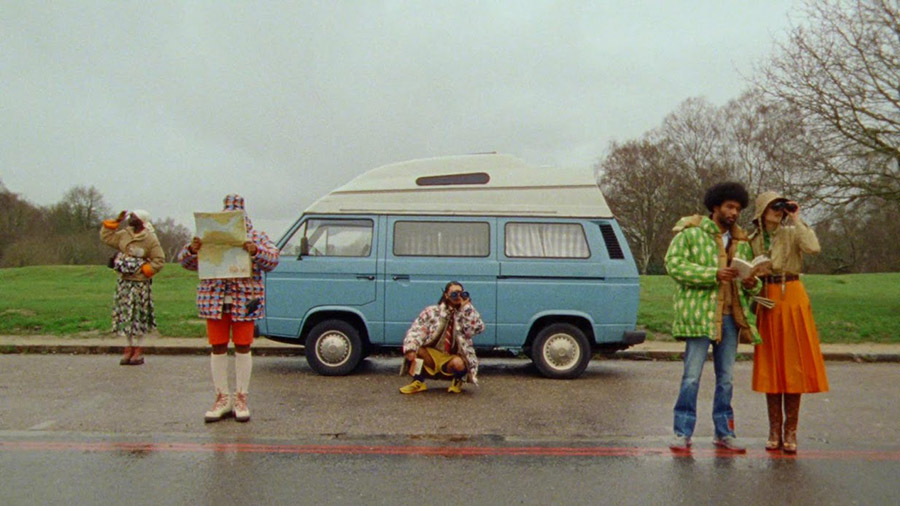
2021 Berlin Commercial Commercial Work Shortlisted: The North Face x Gucci – The North Face x Gucci presented by Highsnobiety (Directed by Fiona Jane Burgess)

2021 Berlin Commercial Personal Work Shortlisted: Heartbreak 101 on Schön Magazine
(Directed by Christophe Dolcerocca & Mathias Hovgaard)
As you create a cultural space, visibility is surely a target to eye! By the way, what topics of culture, art, business of commercial filmmaking, and content creation will Berlin Commercial highlight this year? Why does the summit desire to underscore these subjects?
Well, we’re still facing some limitations due to COVID, but in 2020 we came up with a new concept to host a real festival with in-person, networking possibilities relevant to our industry. Normally, we would have curated panels and stages; what’s happening now is having production companies and agencies all over town open their doors for screenings, talks, drinks, and music. This decentralized concept includes a shared responsibility and allows smaller groups to discover beautiful studios, beautiful people, and. of course, Berlin. We are preparing it right now. The dates for the festival are from August 10 to 14.
Turning towards one of the cultural issues the summit supports, the Berlin Commercial award trophies are produced using plastic waste – LDPE – that is usually not recyclable. Aside from this, how does the summit promote issues concerning the environment and sustainability?
We don’t promote them. In other words, we don’t preach. Our submitted films tackle these issues, and we curate and boost their visibility, same as other important topics like gender equality. Things come naturally, and we believe that inspiration preaches in a modest way.
Measuring sustainability in the event sector is not quite transparent and developed yet. Since 2020 -when face masks, lockdowns, and vaccinations started to influence our daily life – experience and big events, except for soccer tournaments, don’t take place, so any answer wouldn’t be representative, and a digital footprint is still a footprint.
Offering hybrid events includes a lot of planning and organizing on fronts which a regular festival can skip. Since 2020, the event and film industries have had to adapt to new challenges. These developed quickly, so from today’s point-of-view, the main thing we do for sustainability is to live it ourselves and trust in others to understand the urgency and do the same. Yes, we believe in intelligence.
The Berlin Commercial Awards recognize three separate category sections: music videos, personal projects, and commercials. In what ways do the jury and the summit provide support for every submission all creatives sent?
We separated categories into three sections since, for example, commercial projects and music videos were competing in the same categories. Also, the financial situation for each project differs greatly. We wanted to give personal projects, passion projects, and music videos their own stage and more air to breathe to get the right attention, especially when it comes to the craft categories.
In what ways do the jury and the summit provide support for every submission all creatives sent? Well, what we do is offer free strategic advice, which means that the creative teams can send us links to their projects before entering, and we have a look together on how to position them right in the given categories. Creative teams tend to rush into the main categories such as direction, cinematography, and best music video, but casting and sound design, production design, or visual effects are important too and also carry the message of the final films.
Long story short, we believe in team effort; this includes the submission process as well, and a nomination is a nomination, a win is a win.
Berlin Commercial is back for its third edition after a successful run in 2020 with the theme The Age of Collaboration. Is this theme still present this year? About the summit’s future, are there any avenues you would like the summit to venture into? How do you envision its growth in the next couple of years?
The theme stayed as it is. We still have to collaborate and work within the given circumstances. The future? In 2020, we opened a new platform for four-Minute video keynotes, which we feature on our website, Instagram TV, and Vimeo. We will, of course, also come up with new ways to engage with our audience.
As far as physical events are concerned: in January, we separated the fashion film category and gave it its own runway now. Berlin Fashion Film Festival is on again; we’re just producing the trophies for this occasion now. So yes, we’re growing in different directions, but we always stick to celebrating creativity and outstanding talent. Once bigger events are possible again, we’ll have shows with more performance art, stagecraft, and music, and, of course, more in-person networking and rubbing elbows with cool people. Choosing the right outfit for an award show and after party, your own film on a big screen, the first shy dance move, queuing up at the BAR – all that again with hopefully less restrictions soon.

2021 Berlin Commercial Personal Work Shortlisted: Somebody for Dominika Kazakova
(Directed by Jordan Blady), previously featured on CAP 74024

2021 Berlin Commercial Music Video Shortlisted: Megan Thee Stallion – Thot Shit
Text & Interview by Matthew Burgos
Edit by Yves Tsou
Habibitch
Habibitch
Photography | Pauline Scotto di Cesare Styling | Clotilde Franceschi
A French Algerian dancer and choreograph, a Queer feminist and activist. Habibitch uses dance, and her body as a medium. She always denounces through her practice of waacking, voguing and debates – A creative with one aim/goal: « to decolonise the dance floor. »


jumpsuits LEILA NOUR JOHNSON, shoes AMINA MUDDI, earrings AIR OUANE
Hello, Habibitch! How are you?
I am great, thank you. I just came back from work and now I am here, ready to be interviewed. 😀
Thank you for the kind words, could you introduce yourself a bit to us?
Hi, I am Habibitch. I am French, and also Algerian. I am an immigrant, a queer, a feminist and a body-positive and LGBTQ+ activist. I am a dancer, a performer, a choreographer, the Godmother of House of Gorgeous Gucci in Paris, a Sociology teacher in Science Po Paris, and an author-to-be.
You have indeed an interesting name! How did you come up with the name “Habibitch”? Wouldn’t you worry about offending a certain group of people?
I know you like that name! Don’t you? Actually it was my friend who inspired me to name myself “Habibitch”. It perfectly links my heritage with my identity. Habibi is a common word in Arabic, meaning “my love”, “darling” or simply a greeting. We Arabic speakers use it in our everyday life. Combining Habibi with “bitch”, the stigmatizing slur that people normally use to verbally abuse women (or people with feminine characteristic) is definitely controversial and offensive to some people, especially to those conservative ones in the Arabic Community. However, I don’t care what they think, what matters is how those people who I care and love think. “Habibitch” is a combination of my origin, my career, my passion and my identity. It’s the perfect encapsulation of who I am.
When did you realize that it was the art form that best represents you?
Dance is definitely the art form that best represents me. I realized it when I started to perform waacking and vouging in ballroom. I feel completely liberated and emancipated while dancing, and I can fully express myself through the dance moves. Even though debate and verbal communication are a common way for me to battle against the “heteronormative and racist culture” that is rooted in the contemporary French society; dance is the artistic, non-verbal action that I adopt to “decolonize the dance floor”.
Aside from dancing, do you also practice other art form to voice your debate and spread your view?
Yes sure. As I mentioned before, I am also an activist and a Sociology teacher. I incorporate my dance background to my professional life. I teach my students in the Sociology class to express their point of view, their observation and their philosophy through their dance flow and body movements.
Body is the medium of your dance performance, what is the relationship between your body, your perception and the messages you wish to convey?
My relationship with my body is very close, and I love to use it as a medium to express my thoughts and moods. I love the feeling when my mind is connected with my body.
As an activist, body positivity is one of the messages that I wish to convey through my body. As you may see, I don’t have a body shape that fits to the concept of “perfect body” that the general publics conceived. It is even worse when fashion brands and media perpetuate this “beauty standard” through campaign, advertisement, print issue and social media. That’s why I barely work with fashion. But I am happy about my body, and I would love to challenge the idea of “traditional beauty standard”, to change people’s perspective of how a “perfect body” supposed to be, and to inspire those people who doesn’t have the “perfect body” that media and brands promoted.


total look vintage
Immigration, modernization and globalization have for sure galvanized the restructure of the contemporary Parisian vibe, which is different to the stereotypical Parisian that the world has perceived. For you, what is the new “Parisian Style” or the “Parisian Style in the making”?
France has a very heteronormative and racist culture due to its colonial and religious background. The contemporary “Parisian style”, a more multicultural, multiracial and diversified modern Parisian imagery has already existed, but it was often disregarded and left unnoticed by the society – a very white, catholic, upper-class heteronormative mindset propagated by the government and the mainstream media.
However, I’ve noticed that the gaze from the public is gradually changing. There are more and more people of color, religion, sexual minorities and unconventional icons who come into the limelight, gradually changing the “Parisian” stereotype. But we still have a long way to go before finally changing the whole colonial, patriarchal and xenophobic social climate. And that’s part of the leitmotif of my motto “decolonize the dance floor”.
As a central member of the Paris ballroom scene (which most people around the world might not be familiar with), what is your observation to the Parisian ballroom culture?
Actually, Paris has a very rich ballroom culture. It is one of the most colorful and vivacious ballroom scenes in the world, second to those in the United States. The success of “RuPaul’s Drag Race” introduces this African and Latin-American LGBTQ+ underground subculture to the public, but in fact, there is much profound cultural context behind it. Many people conflate the idea of ballroom culture and drag ball culture, but they are actually two different scenes. In the Parisian ballroom scene, drag or cross-dressing performance is not necessary; competition for the trophy is not a must; and the members are not solely from the LGBTQ+ community. Ballroom welcomes everyone, and I am a proud member of the community, the godmother of House of Gorgeous Gucci. I used to go to balls to meet my friend, to enjoy my night with music and dance, and to leave alone in the early morning without saying goodbye to them. I really like this kind of feeling, because we will for sure meet again in the next ball. And I am happy that Paris is the city that embraces it.
So In a way, Paris is literally burning! As an LGBTQ + and body activist, you fight for the rights of the minority communities against all kind of discrimination. What are the difficulties you’ve encountered while voicing for them?
Of course there are. Even though we are in 2021, there are still a lot homophobic, misogynist, racist remarks and hate crimes happening everyday. Colonial and patriarchal white hegemony is still quite influential in France’s culture. I’ve encountered people who dislike my name, my appearance, my debate or the ideology that I represent. However, I don’t care about what they think. I am professional, so when I am working on something, I can dedicate myself fully into it without being effected by the slanders and slurs. I am also a caring person. I care about my friends, my community and my ballroom family; they are the person who I love. And for those haters, I really have no time for them.
Thank you for the brilliant elaboration, we really enjoy our talk with you. Before saying goodbye, we would love to know what are your plans in the upcoming future, and your own artistic career?
I have many projects going on right now, and some of them are still confidential. But I will for sure continue to dance, to attend ballroom (of course during the lockdown it is impossible), to teach and to advocate. One thing I can tell you is that, I will soon have a new identity – an author. I am going to publish my first book in the upcoming future, I cannot disclose too much to you right now, but I am very excited about it.
What an exciting news! Congratulations Habibitch. We are looking for your new book and we cannot wait to hear more from you in the near future. Thank you so much for the interview today. Have a lovely evening!

underwear ERES, necklace AIR OUANE
Talent: Habibitch (@_habibitch_)
//
Photographer: Pauline Scotto di Cesare (@paulinescottodicesare)
Stylist: Clotilde Franceschi (@clotildefranceschi)
MUA: Thierry Do Nascimento (@thierry.do.nascimento)
Hair: Andrea Idini (@andrea_i_hair)
Nail Artist: Pablo Esconails (@pabloesconails)
Producer: Miriam Haddad (@saint_lucyfer)
Assistant Producer: Camelia
Interview by Yves Tsou
Close to Me: Interview with Cori Amenta

jacket & skirt ELISABETTA FRANCHI, shirt P.A.R.O.S.H, jewelry Cori’s own
Close to Me:Interview with Cori Amenta
Photographer: Ilenia Modica
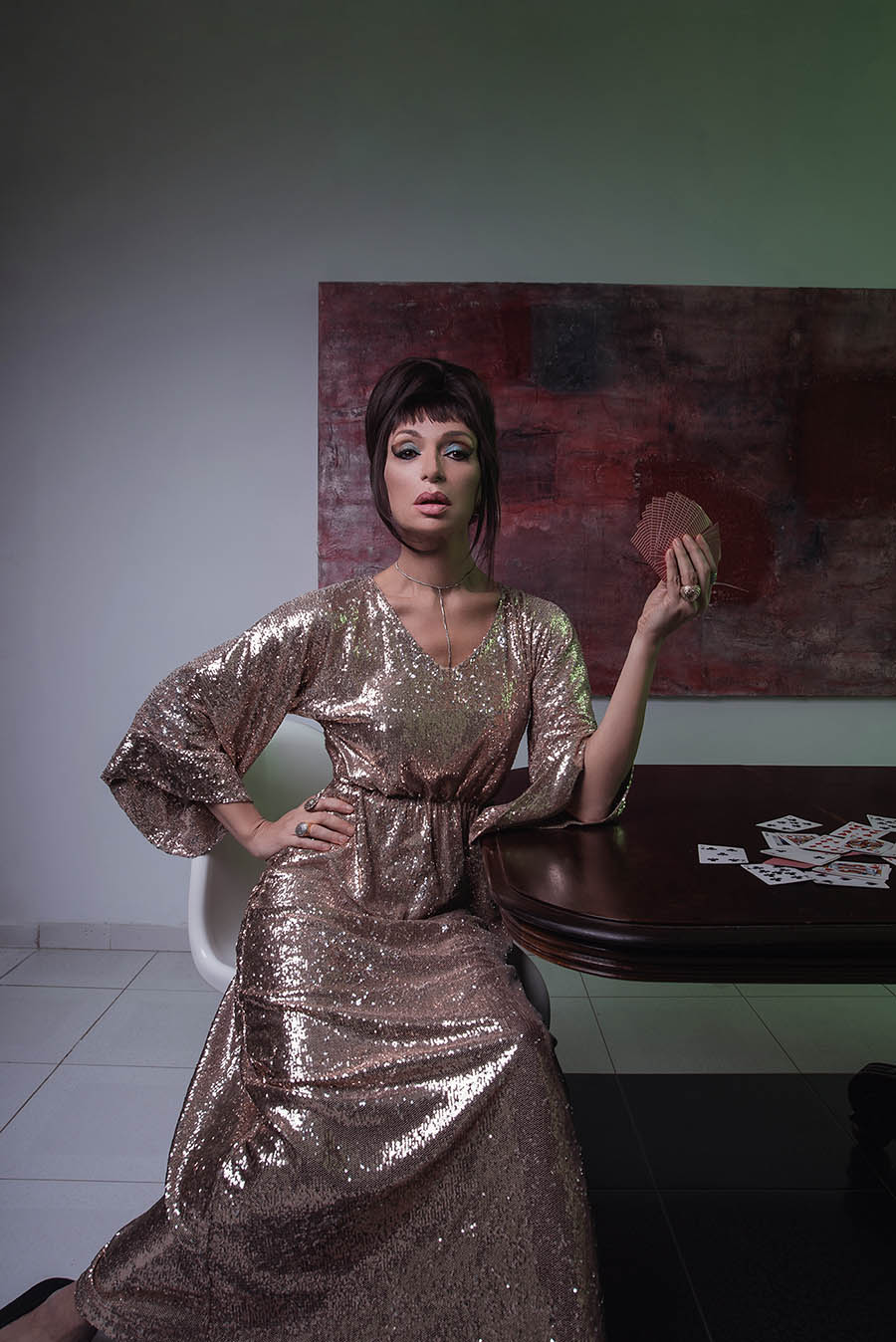
dress THE B., shoes CORI AMENTA
When did you decide that fashion was your way? What is your earliest memory related to it?
I was born and raised in my mother’s boutique and tailors shop; it was here that I first felt an unbearable need for fashion, elegance and levity. Within the years I understood it’s the most immediate way to get closer to the status we’ve been aspiring for since we were young: after all, we only are our true selves when we’re naked or under the shower; besides that, we just dress up as who we would want to be. And this goes both for housewives and lawyers.
What does it mean to be a trans woman today in fashion and in Italy?
Trans lives in general have to take account of other’s prejudices, in every sector. Also within the fashion industry, which is obviously a gold cage at almost exclusive gay use, and we (really few) have to struggle way more to get to things that for others might be often expected and given for granted.

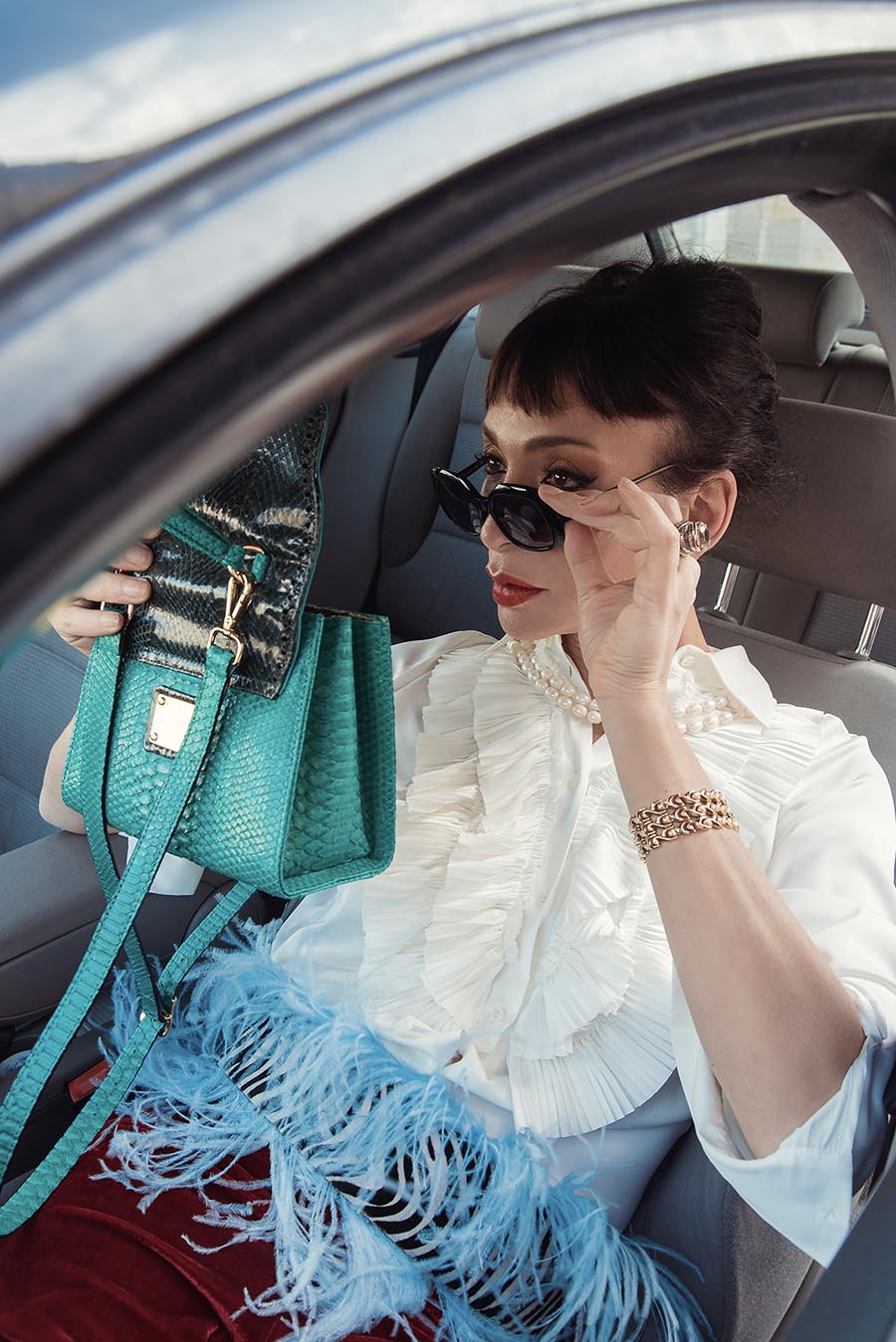
shirt P.A.R.O.S.H, belt ONE LOVE BELTS, pants PIERRE MANTOUX, bag TARÌ, sunglasses MAX & CO
What would you change about this industry to make it truly inclusive, beyond the often façade claims on social media?
This is a complex question that would require specific studies on the subject matter. What I, independently of my lack of knowledge in the field, would want to succeed is talent – which is not strictly related to “connections”. Italy is still very attached to this mentality, it’s probably part of our dna, I don’t think it will change, at least not immediately.
During the just-concluded edition of the Sanremo Festival, you dressed Achille Lauro. Already last year, his eccentric stage presence and the artistic looks curated by Alessandro Michele had been harshly criticized and misunderstood. This year, even some members of the Church have spoken harshly after the symbolic kiss on stage between Achille and his producer Boss Doms. Do you think that musical icons as Lauro can really contribute to the breaking of homophobic retrograde cultural barriers in a country as traditionalist as Italy?
Starting by saying that Achille Lauro wore a pair of shoes from my collection which Nick Cerioni, his stylist, chose for him, I have to say that – despite being all references tied to 70’s stars (from David Bowie to Renato Zero) – I believe a new energy in a conservative theatre like the Ariston just lightened a long heavy show. I’ve seen so many alternative couples this year…will it be a new trend?
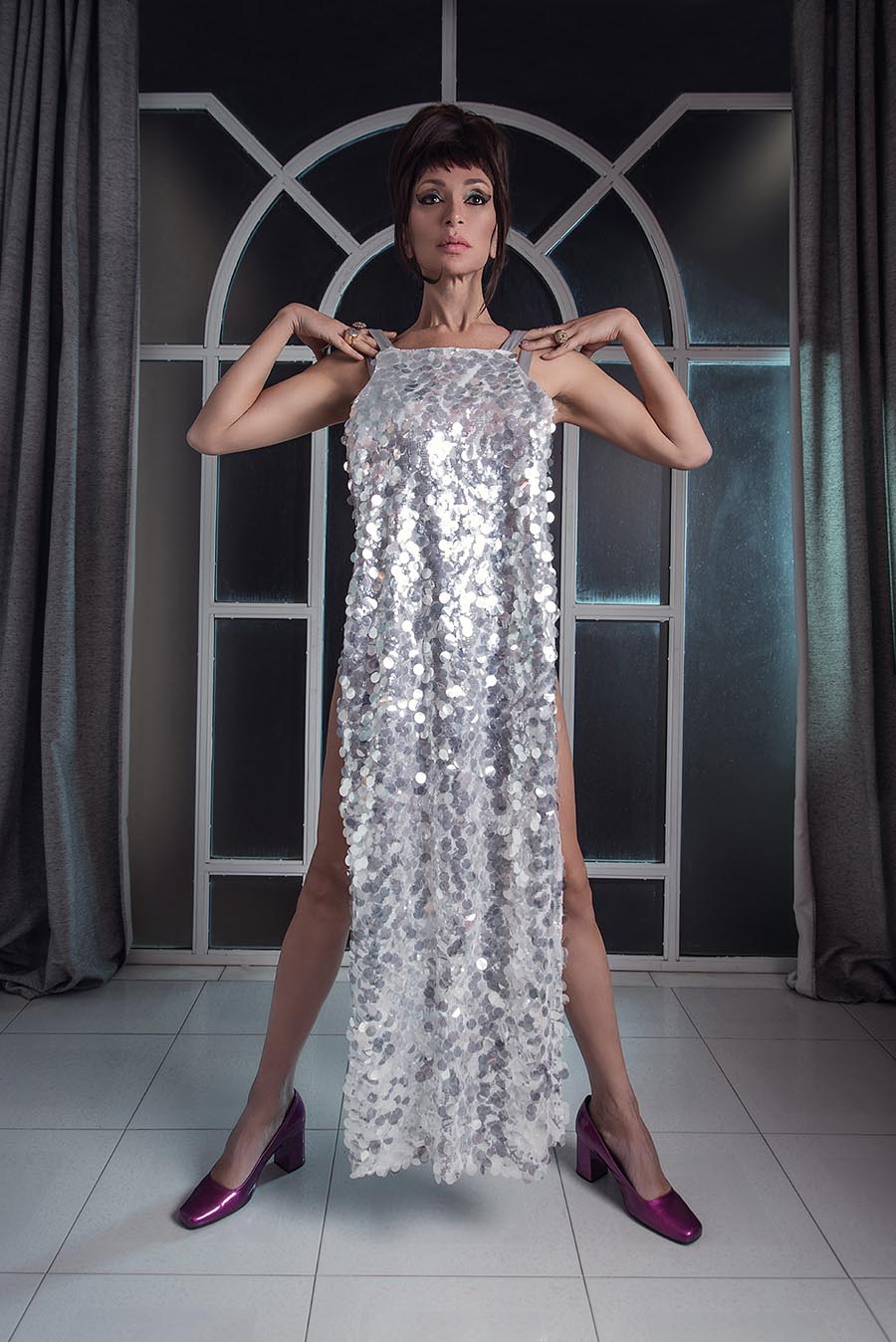
dress THE B., shoes VIRILI

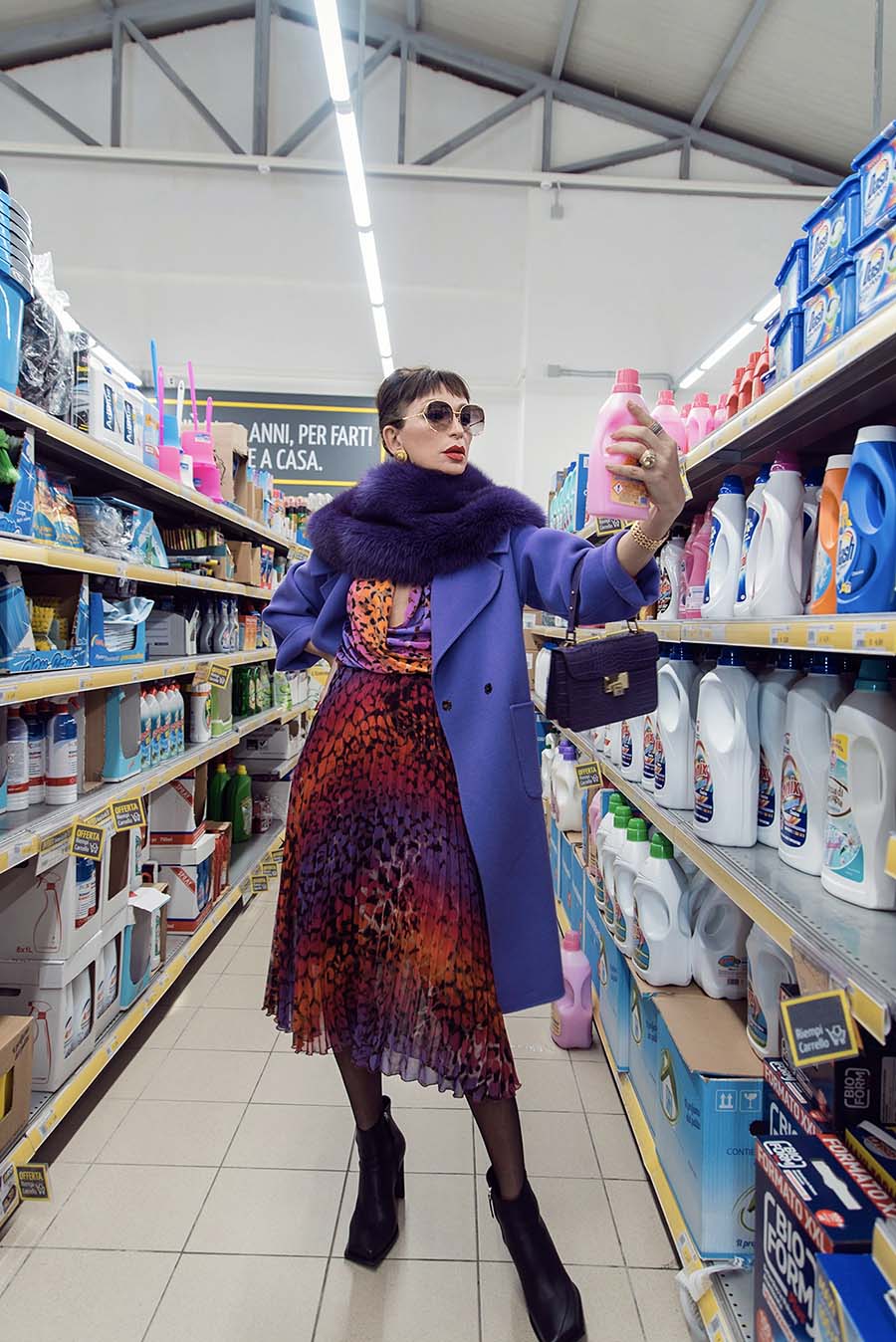
skirt, leotard, coat, collar & bag CLIPS, boots VIRILI, earrings stylist’s own vintage CHANEL, sunglasses GUCCI
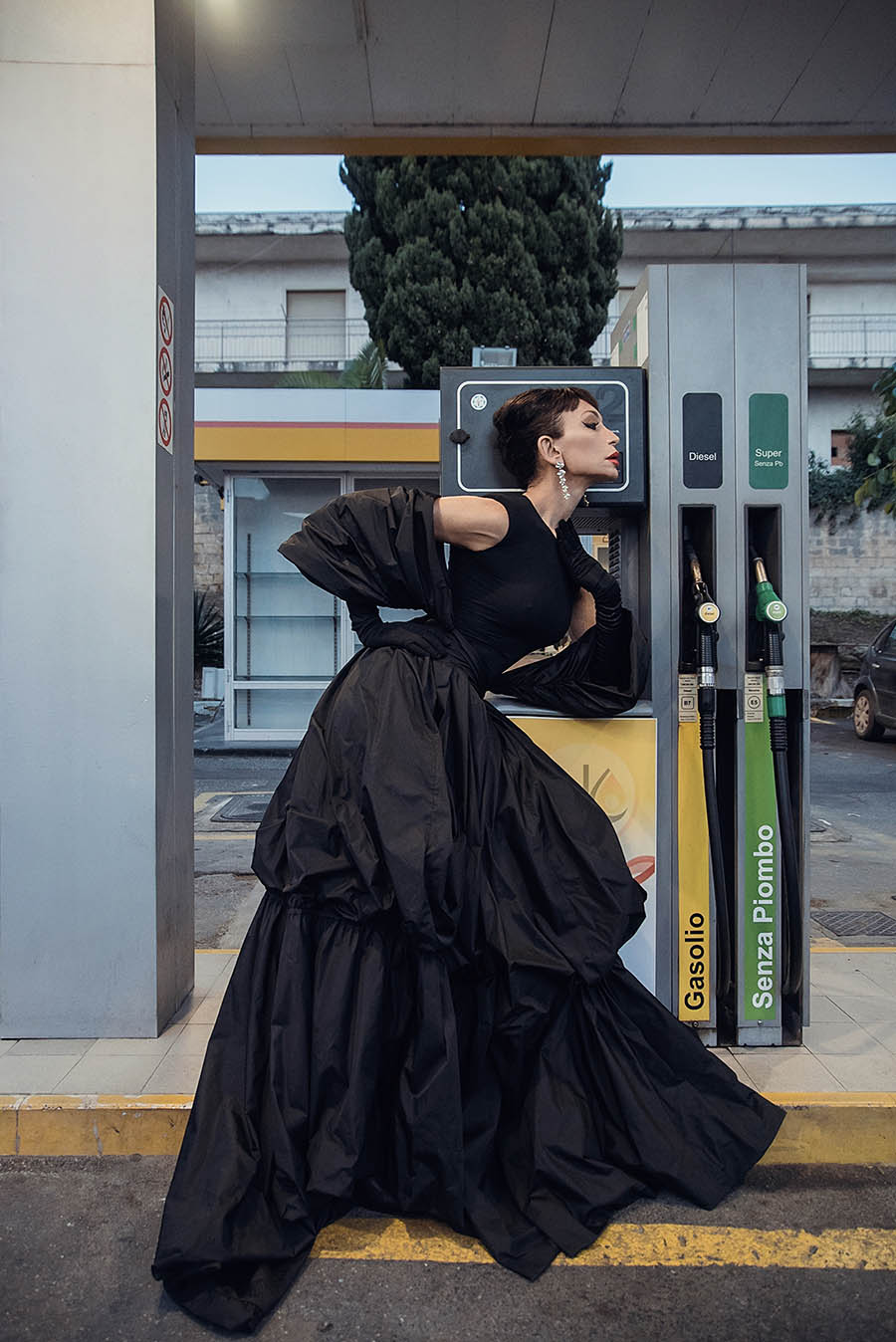
bodysuit & skirt ADELBEL
You are a multifaceted character, you will soon launch a series of ceramics and objects born from the Sicilian tradition filtered by your creative eye. Where does this project come from?
One thing a lot of people don’t know about me – distracted by my shoe collections or my styling work – is that, many years ago in Syracuse, I attended Art Institute specializing in plastic art decoration. Conceiving a ceramics collection was immediately thrilling to me and I realised something I had studied with great passion.
Milan is your professional headquarter and the city from which you were adopted, but your origins are Sicilian. What does it mean to be Sicilian for you and how do you see the present and the future of this beautiful island?
I’m a genuine Sicilian who has established in Milan many years ago. Here I found work, love, I have a house…but my roots are in Sicily, I always go back, I have family. My ceramics collection will be produced between Caltagirone and Noto, I’m developing a series of activities that will allow me to enjoy my beloved land way more. Obviously my Milanese reality will continue to stay – as in all respectable adoptions, Noto is were I was born, but Milan is were I grew up, it’s my full-fledged mother.
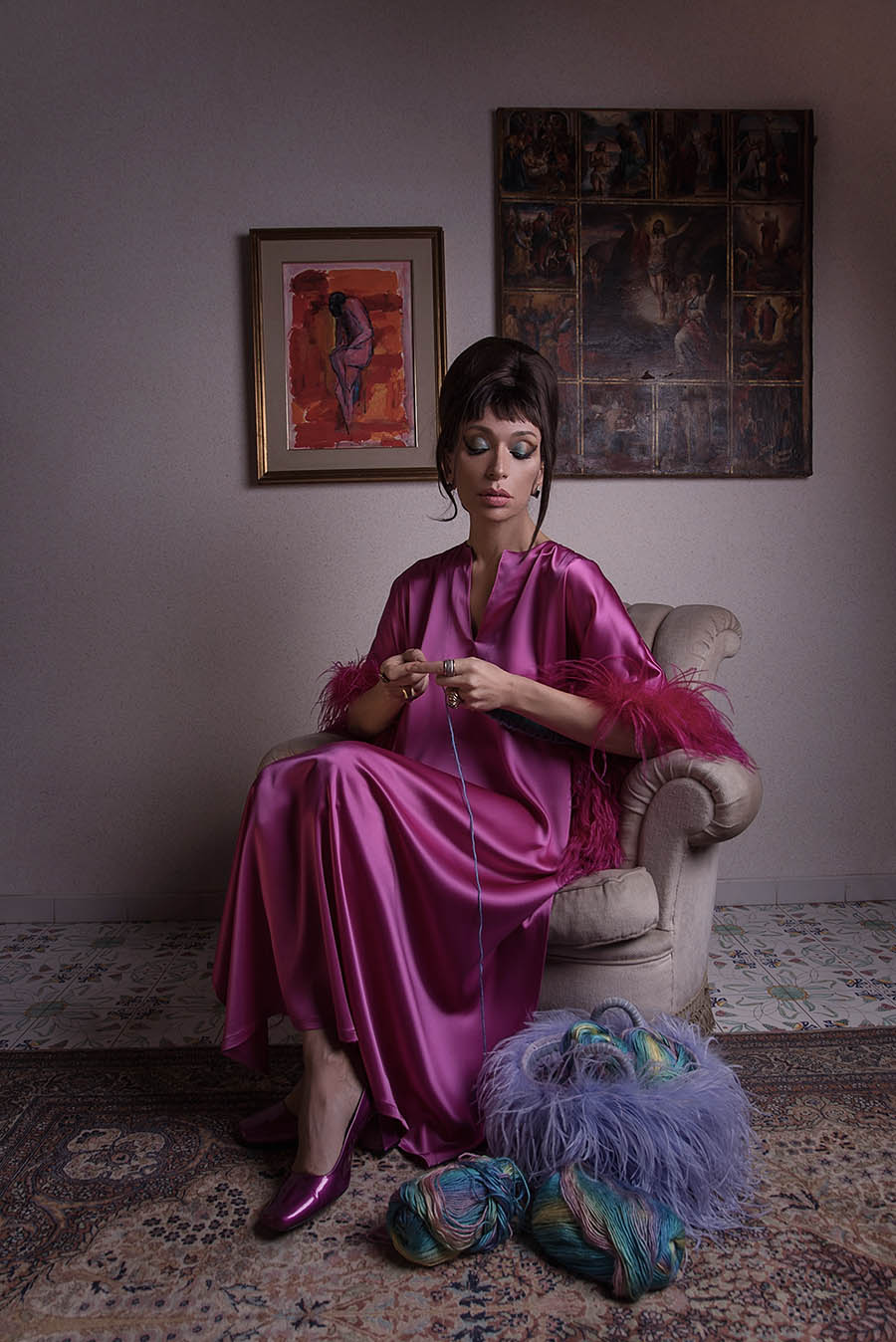
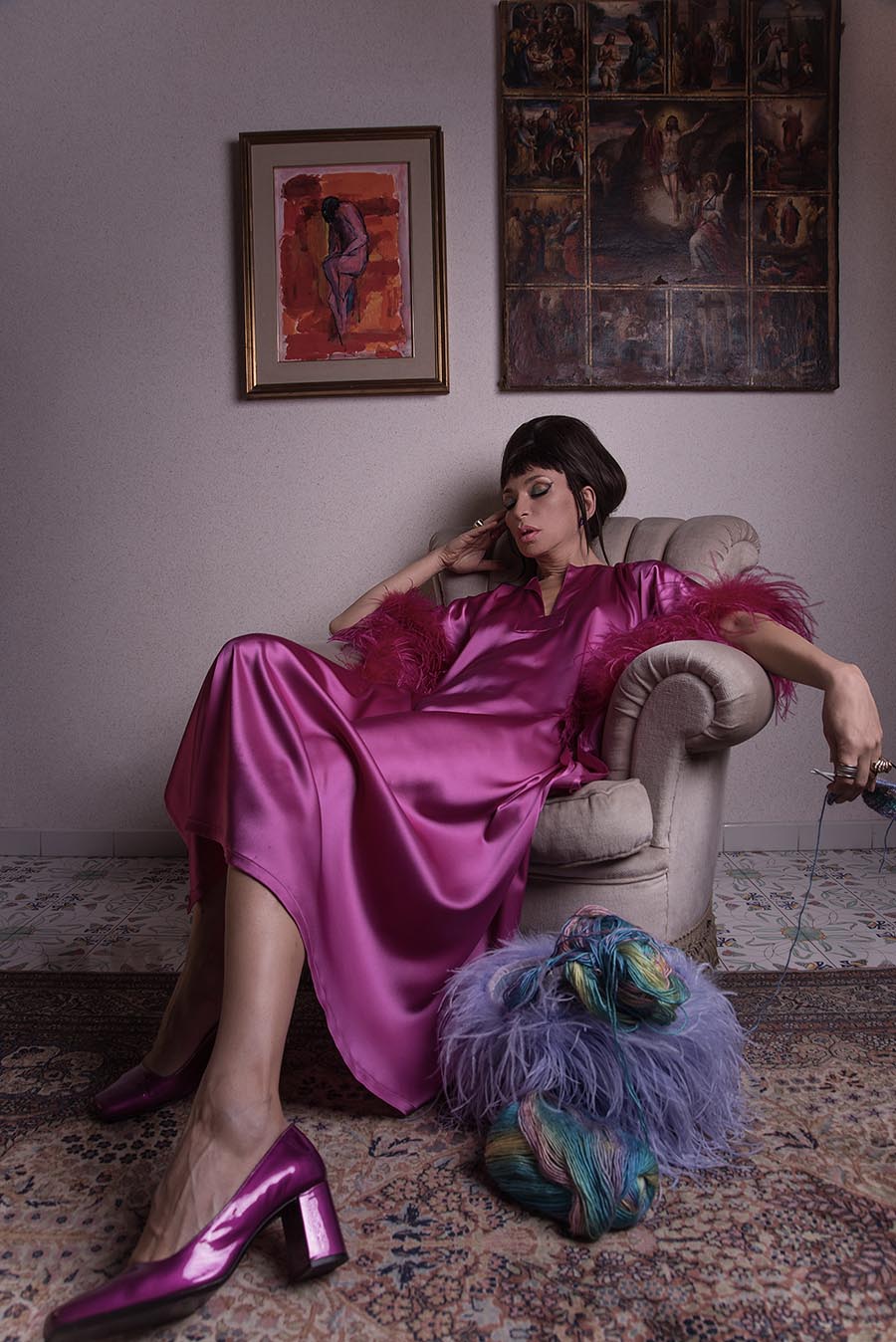
kaftan & bag PESCEPAZZO, shoes VIRILI
In which other fields, besides fashion and design, would you like to range?
Other than my shoe collections and my collaborations as a stylist, I also design settees for a renewed Italian company , I’ve just finished a capsule collection that will be on sale this Spring/Summer 2021 for a famous Italian brand, I’m designing along with my architect two villas in Sicily, I have just signed a contract with a record label for a new Italian singer (very talented)…I would like to do more, way more even if honestly I think it’s already ok, don’t you think?
The line of shoes you created was born from your, and many models, personal need: namely the lack of aesthetically relevant footwear above a certain size. Are there any other needs that you have not yet answered through your brand?
My collection was born from a very serious logistic issue: the lack of cool footwear over size 40. Obviously I also sell classic sizes, I would love to also develop an accessory line and, why not, clothing, but given the moment we’re living…it’s better to remain with our feet on the ground and be thankful to have survived one of the worst moments ever happened. Let’s talk about it next year! A sincere hug and thanks to all readers of CAP74024 ❤️
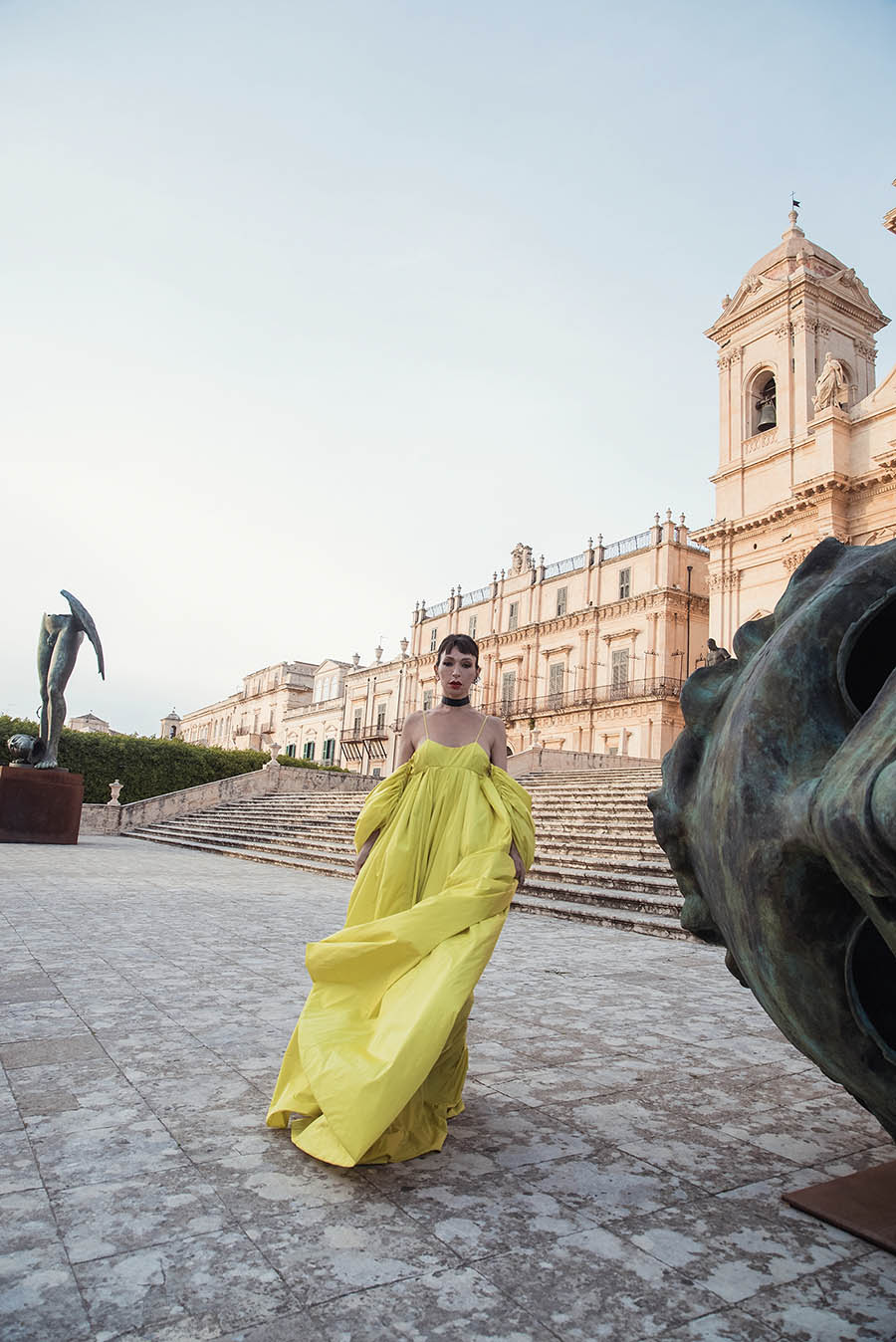
dress ADELBEL
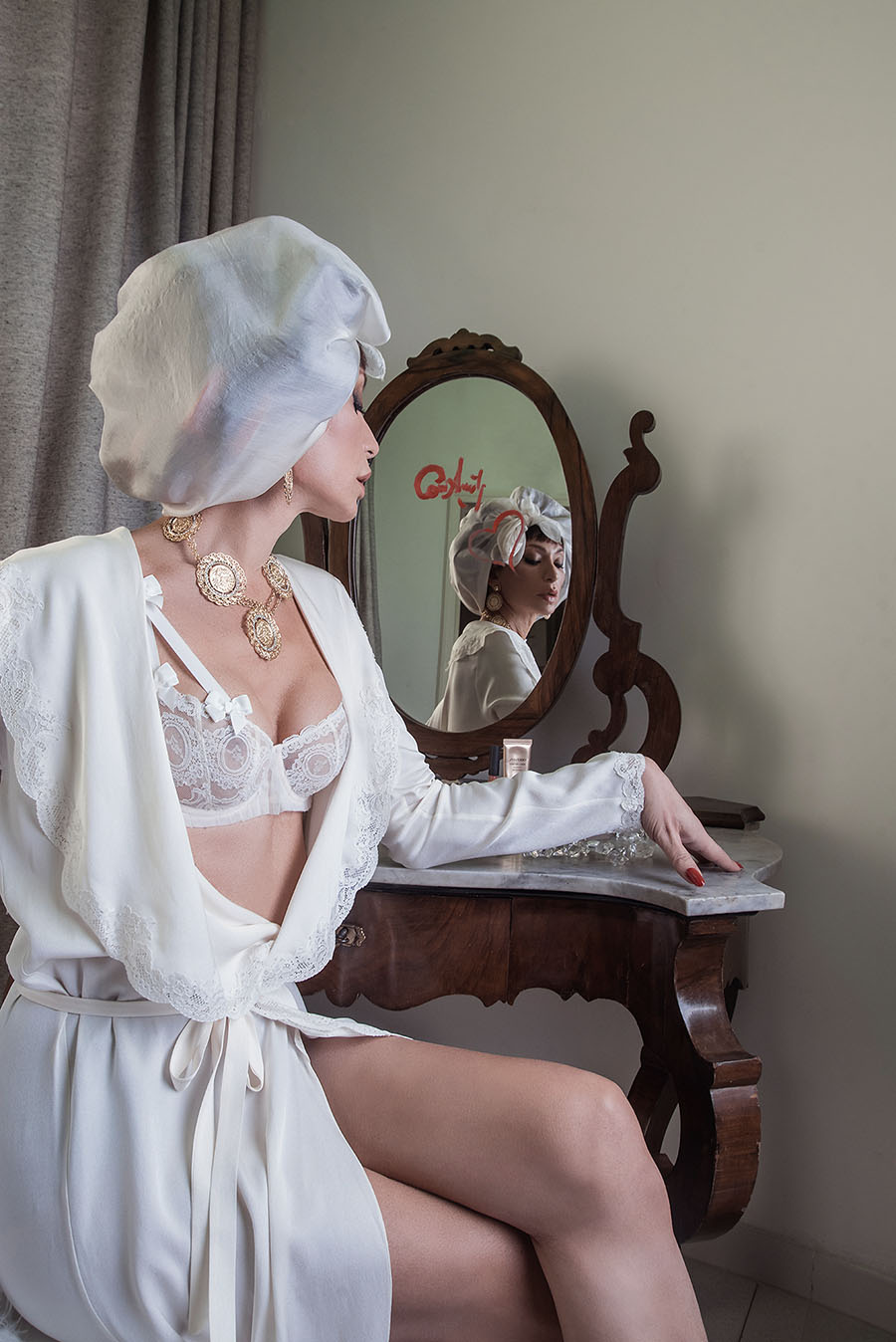
bra CHANTAL THOMASS, gown with belt CHRISIAN DIOR BOUTIQUE
Talent: Cori Amenta (@coriamentaofficial)
//
Photographer: Ilenia Modica (@ileniamodicaphoto)
Stylist: Enrica Miller (@enricamiller)
MUA: Elena Gaysina (@gaysina.elena)
Hair Stylist: Mirko Battipaglia (@mirkobattipaglia)
Lights: Alessandro Pardo (@pardo_alessandro)
Interview by Mattia Cantoni
Fear and Freedom
FEAR AND FREEDOM
"My name is Maria Kazikhanov. I'm a Russian photographer/filmmaker living in NYC. In support of political prisoners in Russia (ans also in Belarus) my team and I made an Art Project - Fear and Freedom.
With this project we want to bring attention to what is happening in Russia right now - that thousands of people are being arrested, poisoned, jailed and tortured just for having a different political opinion or different look, for posting and reposting in social media, for being on the street at a wrong time and even for being silent.
This project is very personal to me beacause my husband was severely beaten for being on the street at the wrong time and tortured by Russian police for wrong nationality... I wish I could come out to the peaceful protest in Russia, but as soon as we come back we will be arrested for having a different political opinion, for believing in freedom. So the best I can do is this project to let the world know that thousands of people are suffering in Russian prisons, right now..."
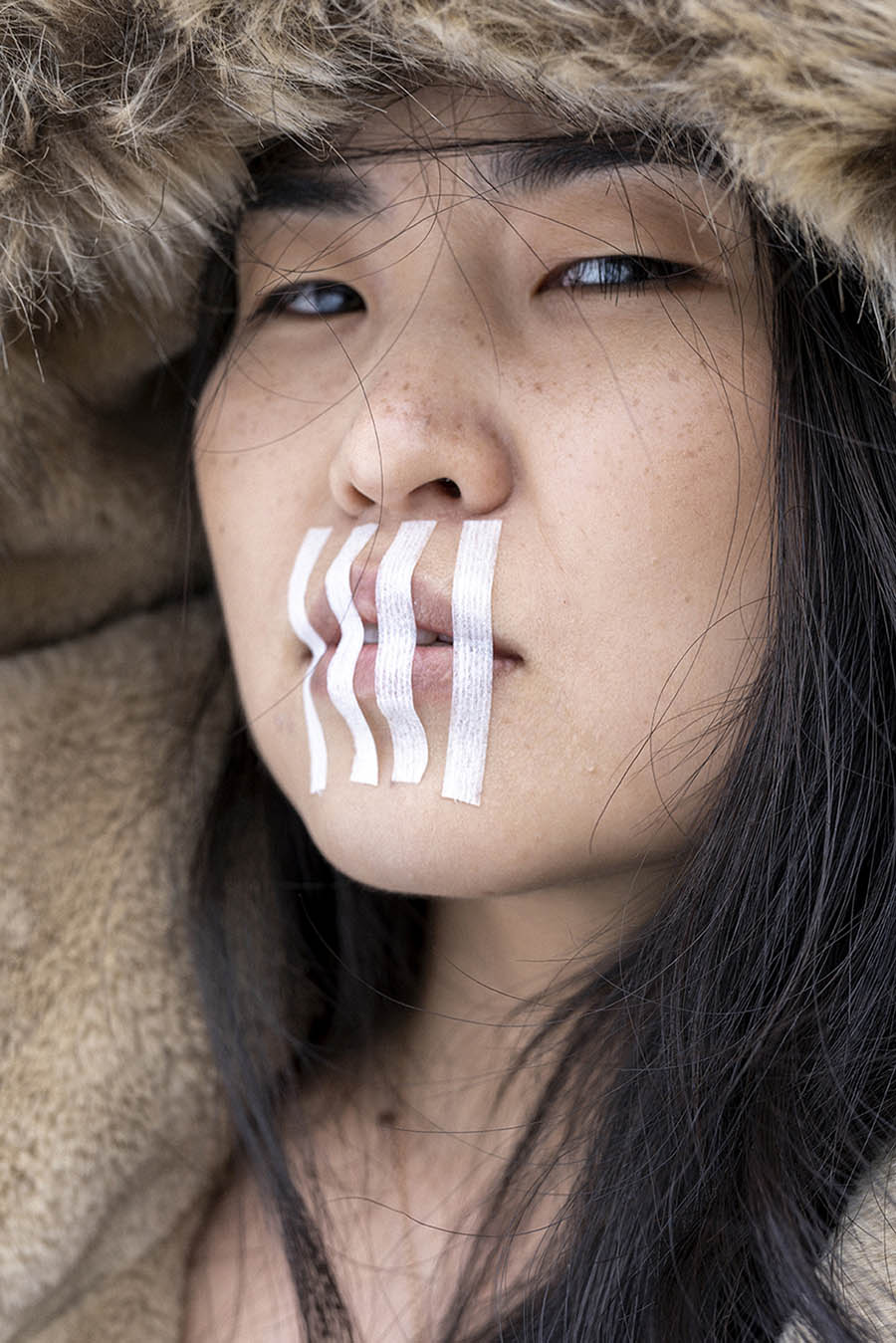
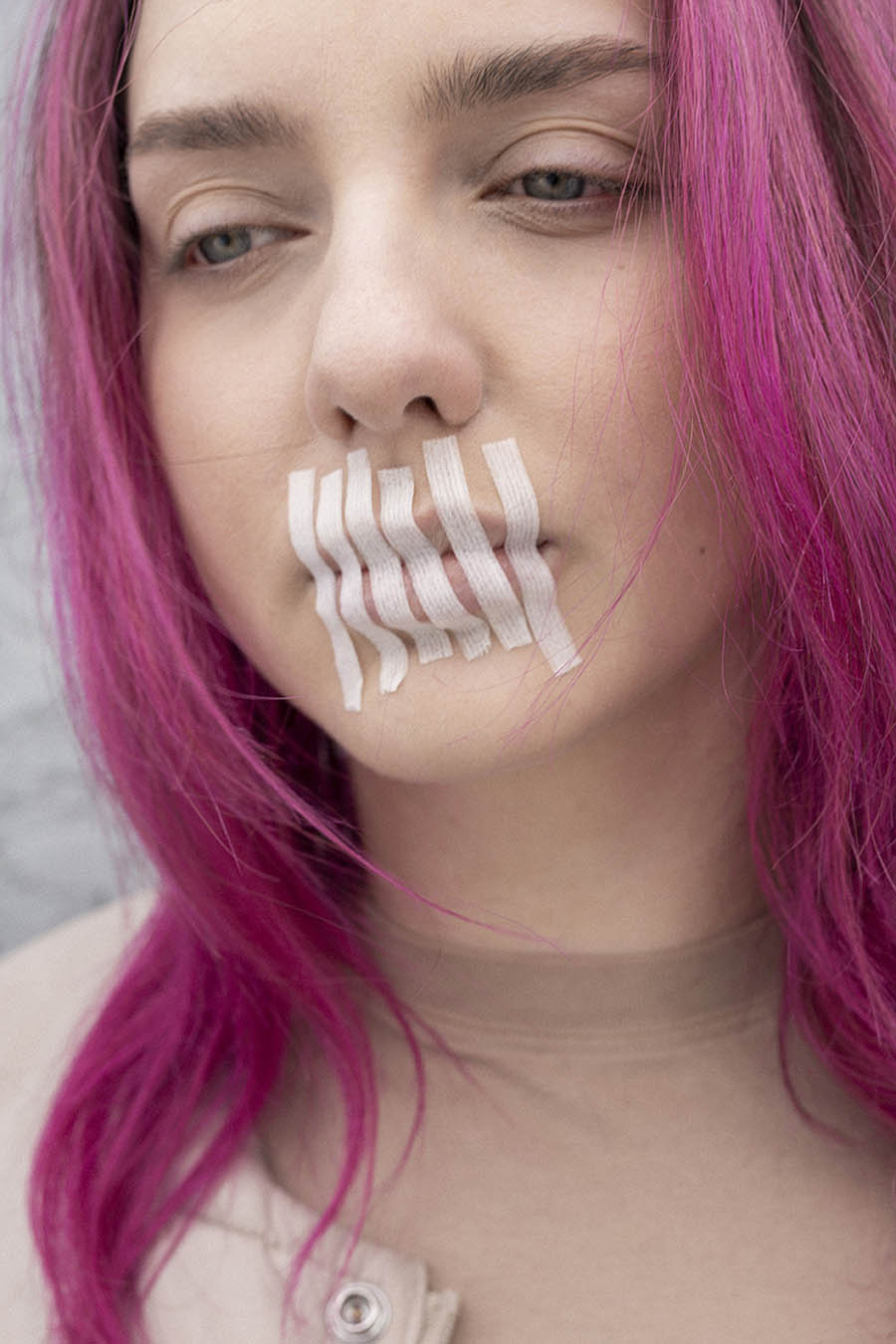
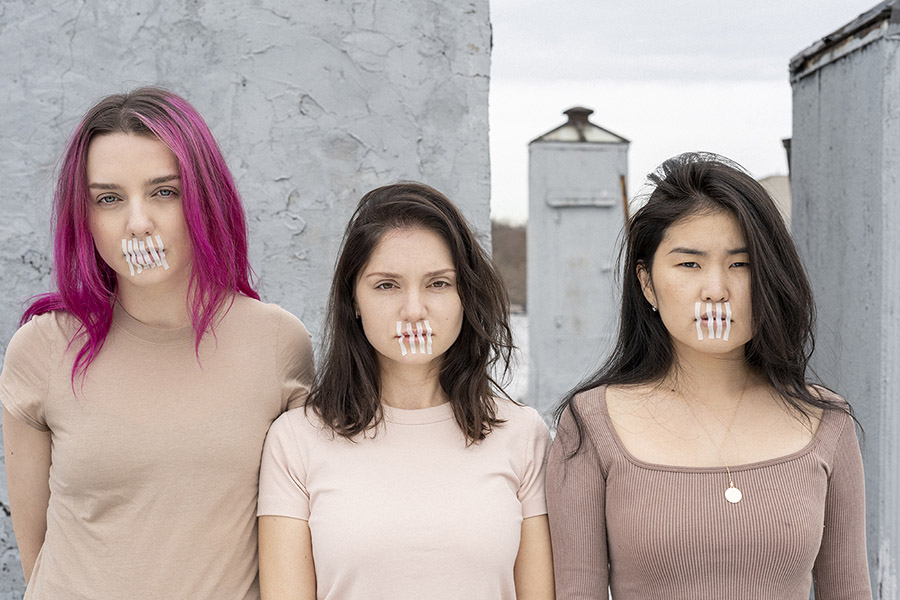
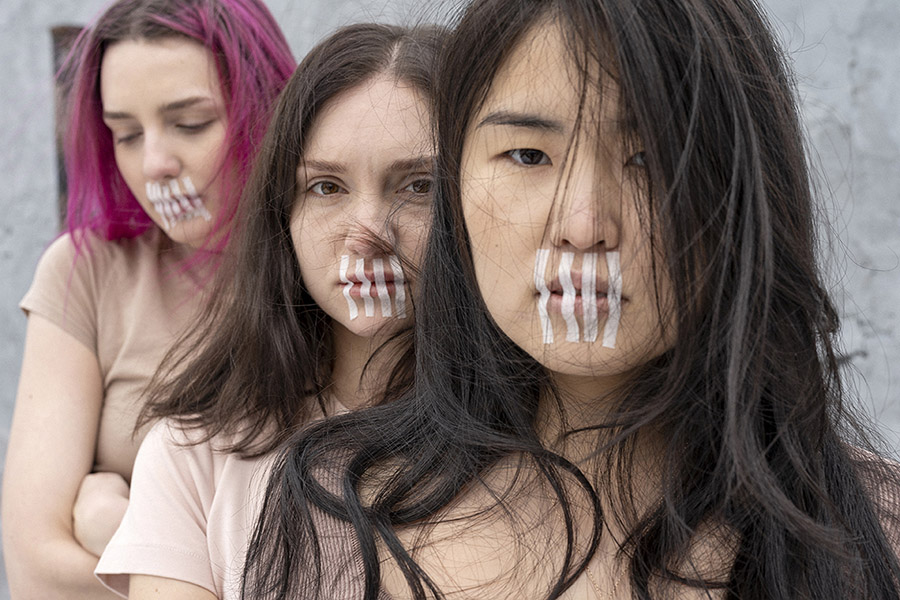
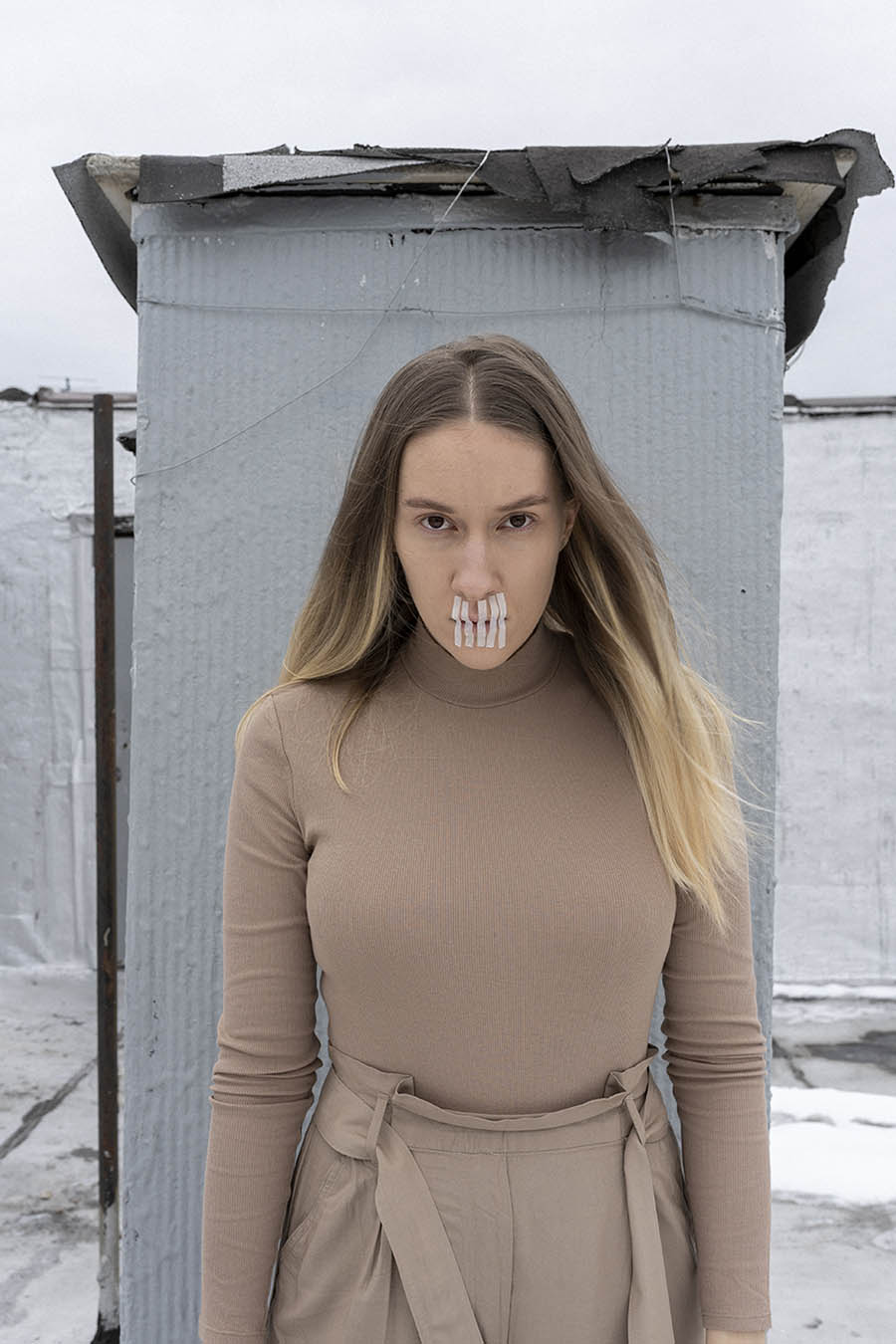
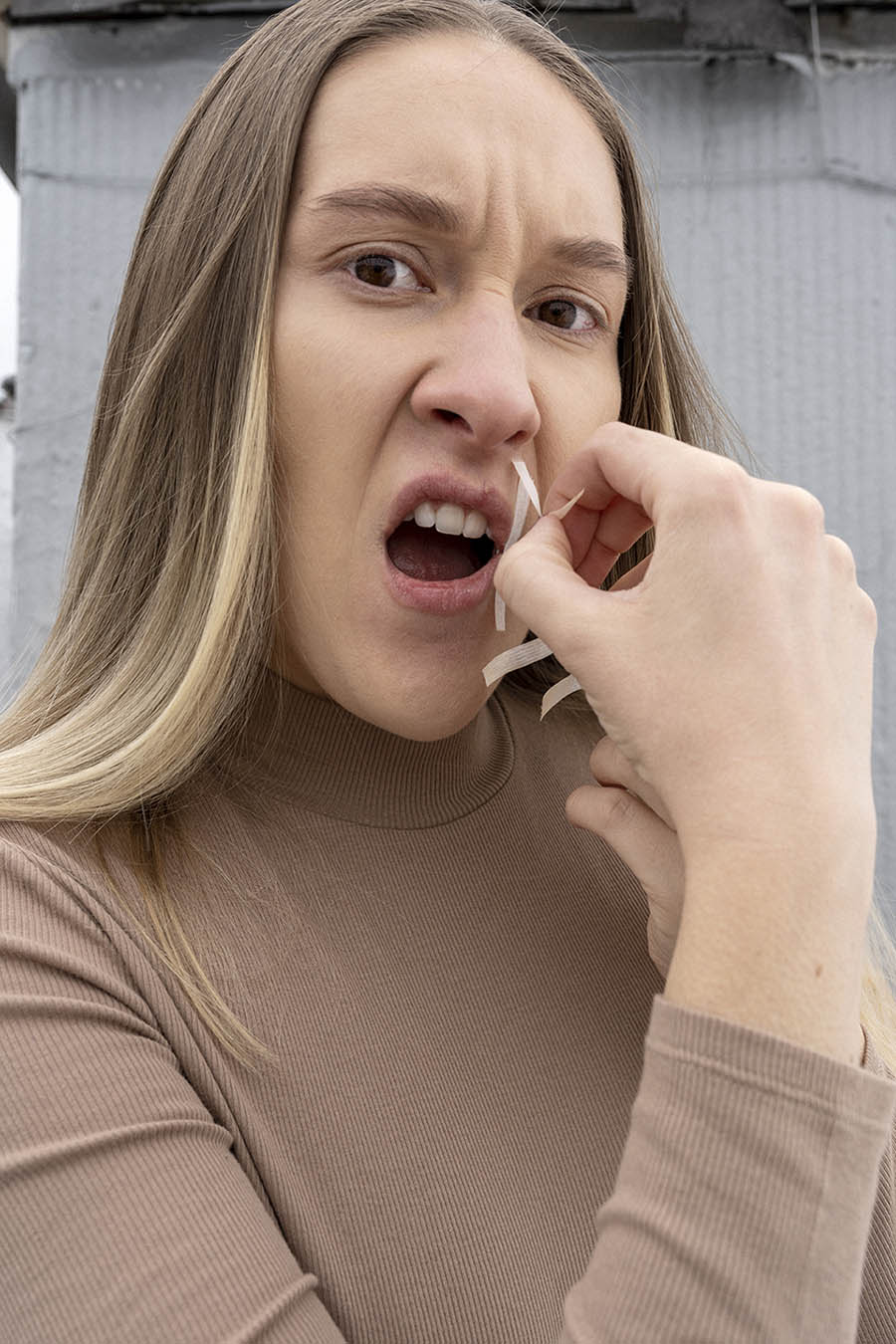
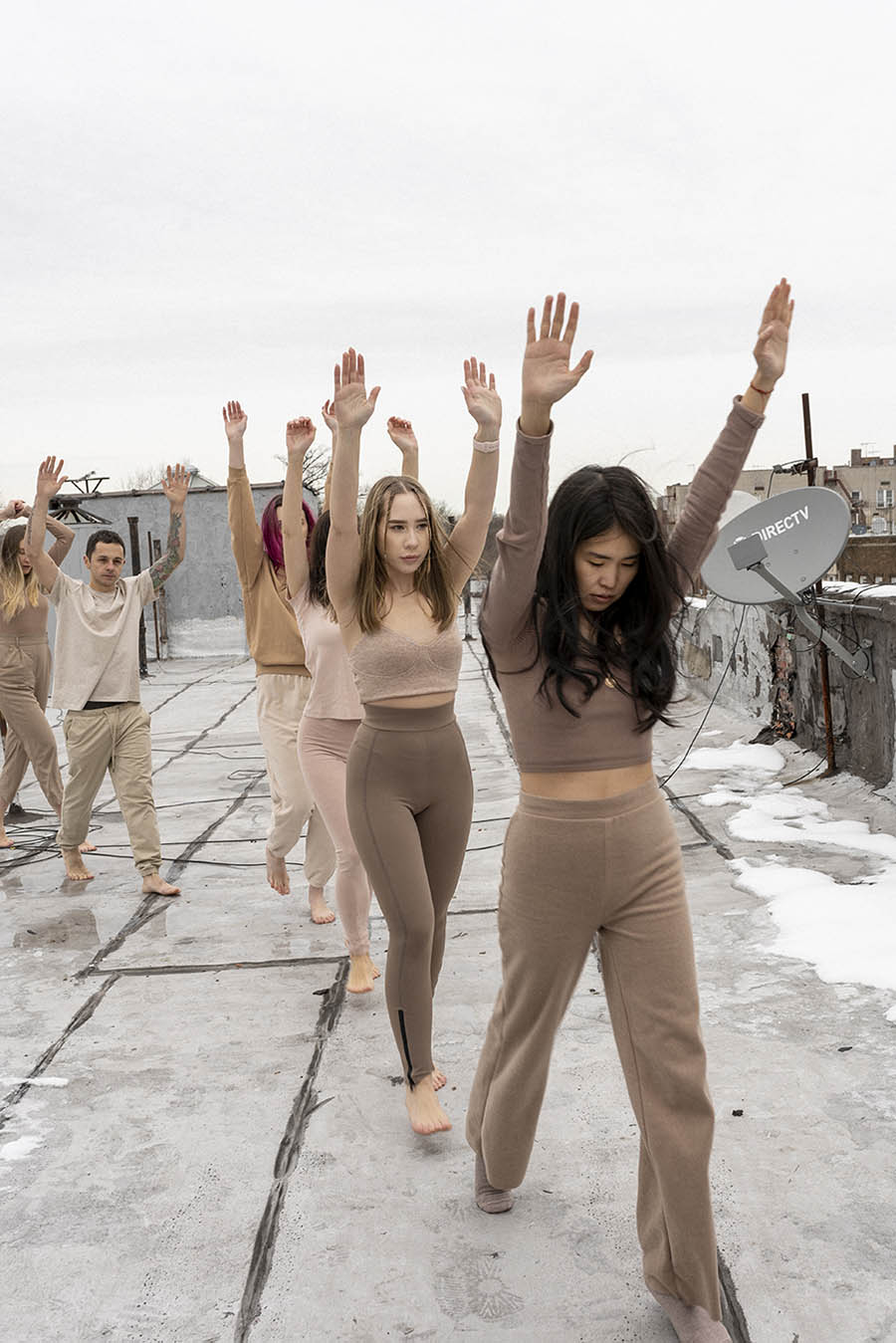
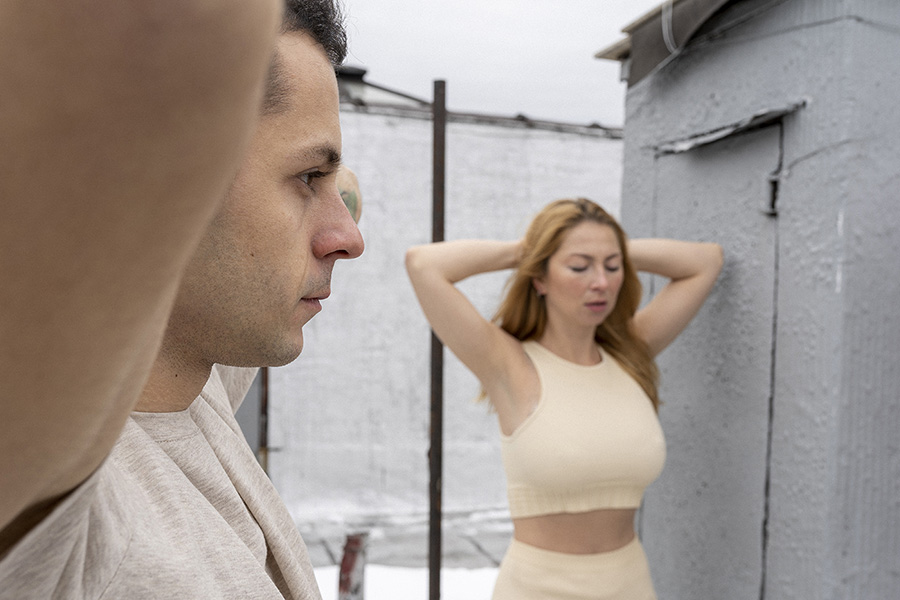
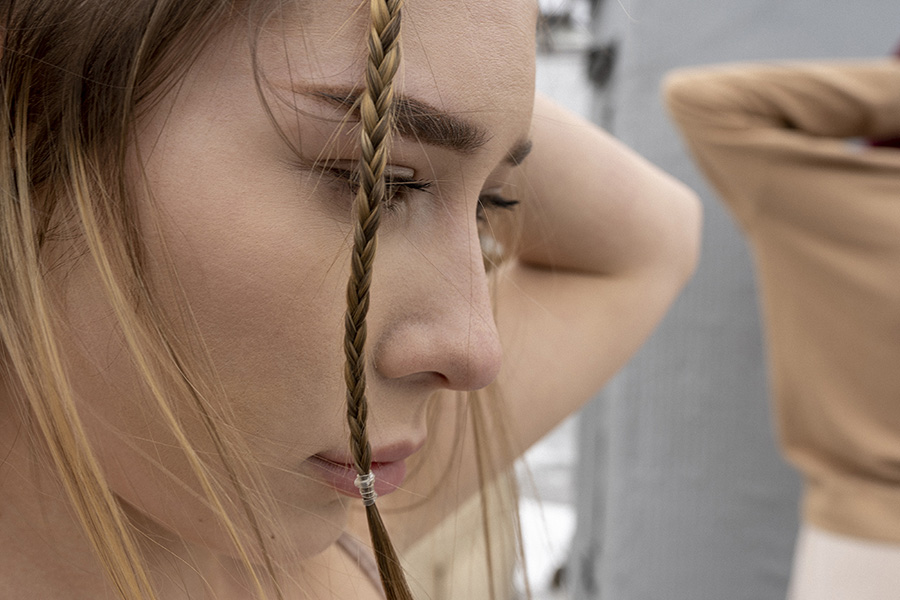
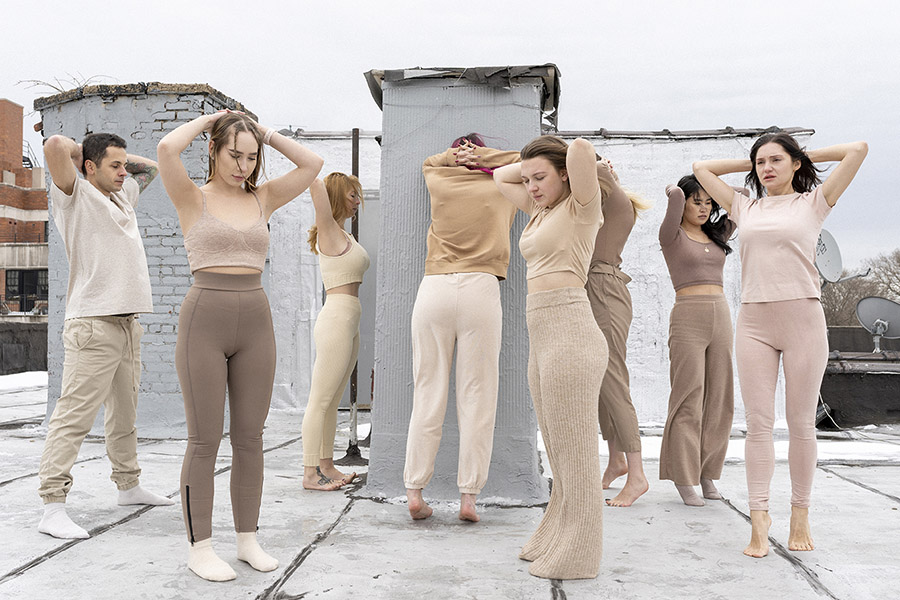
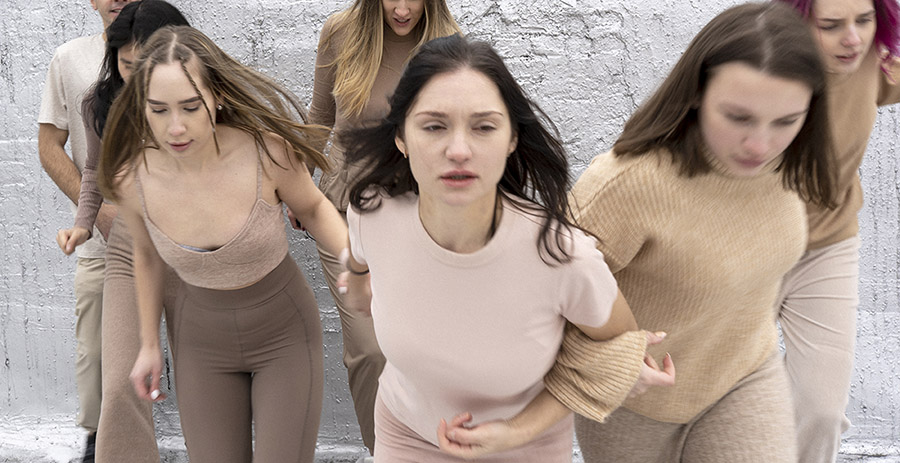
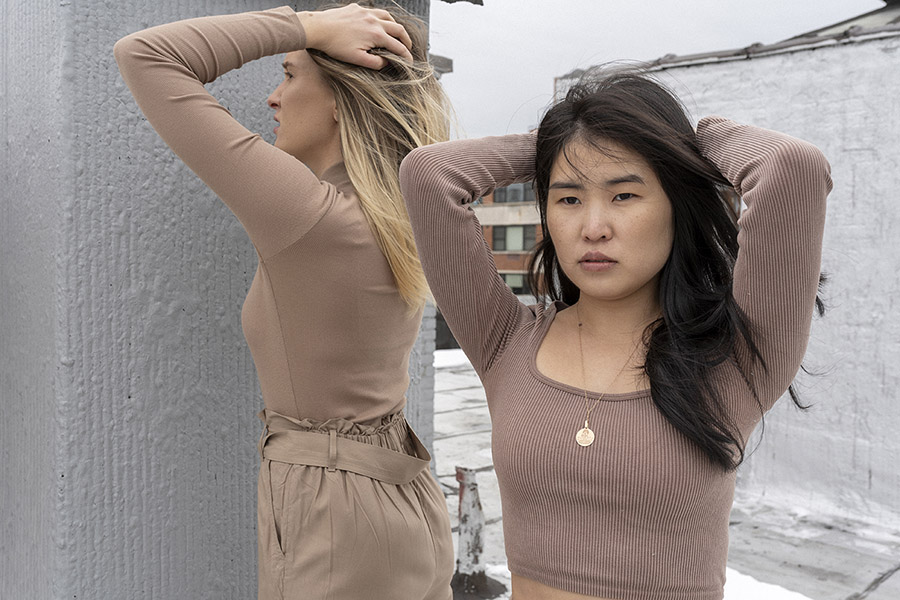
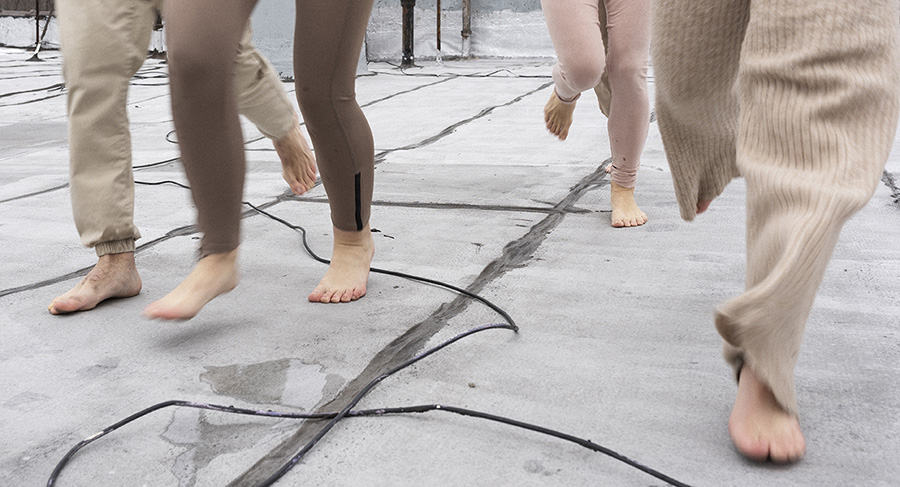
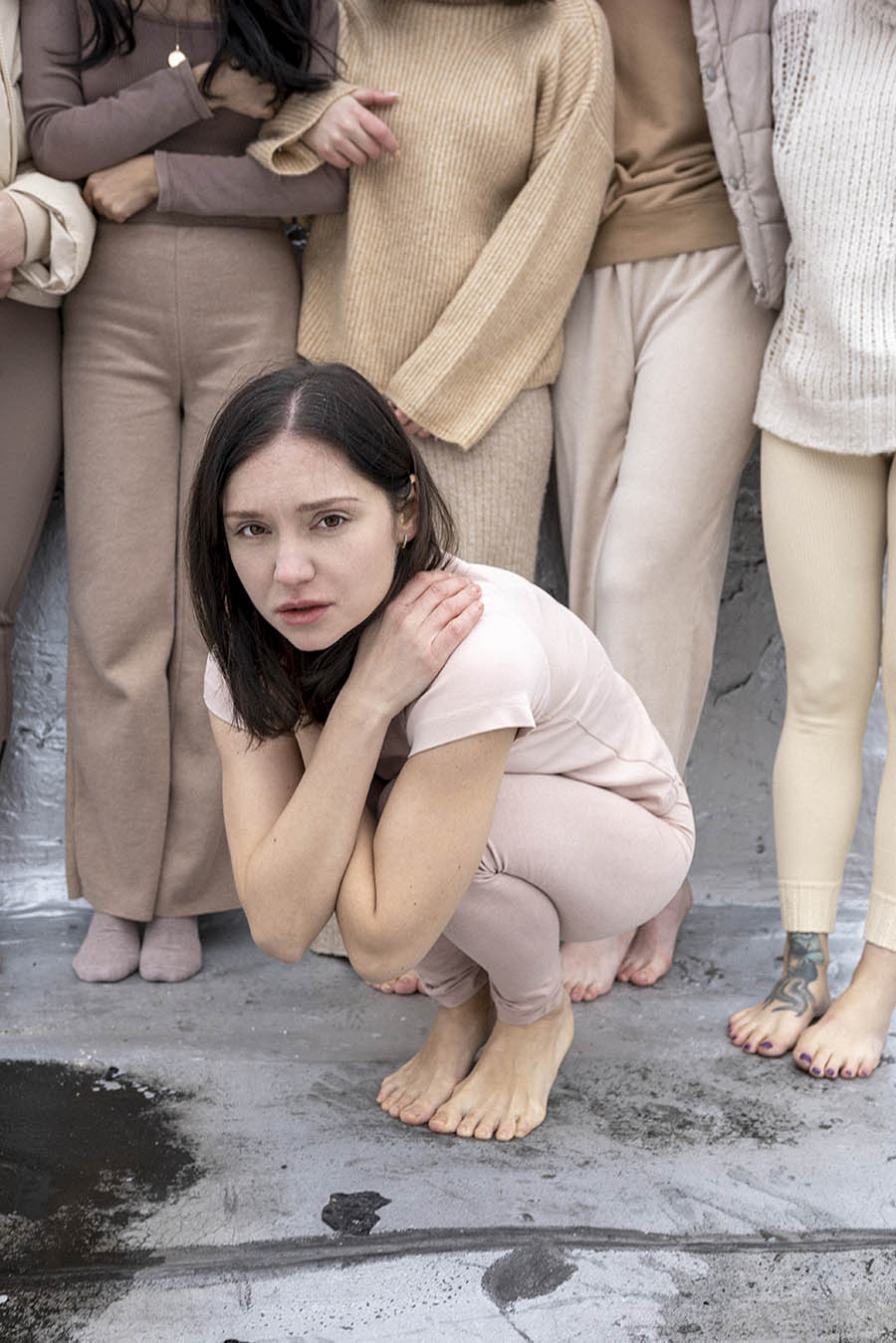
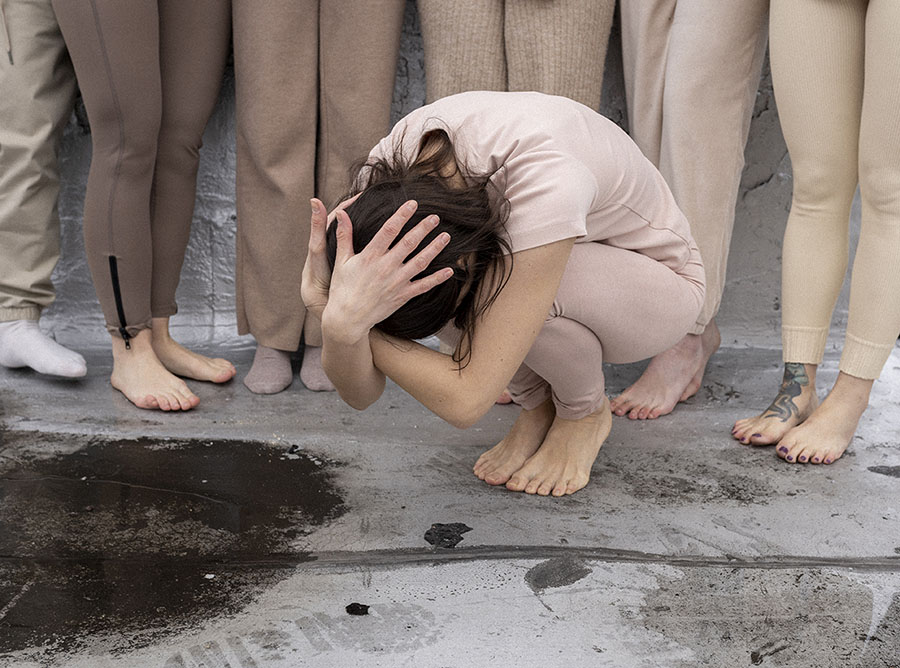
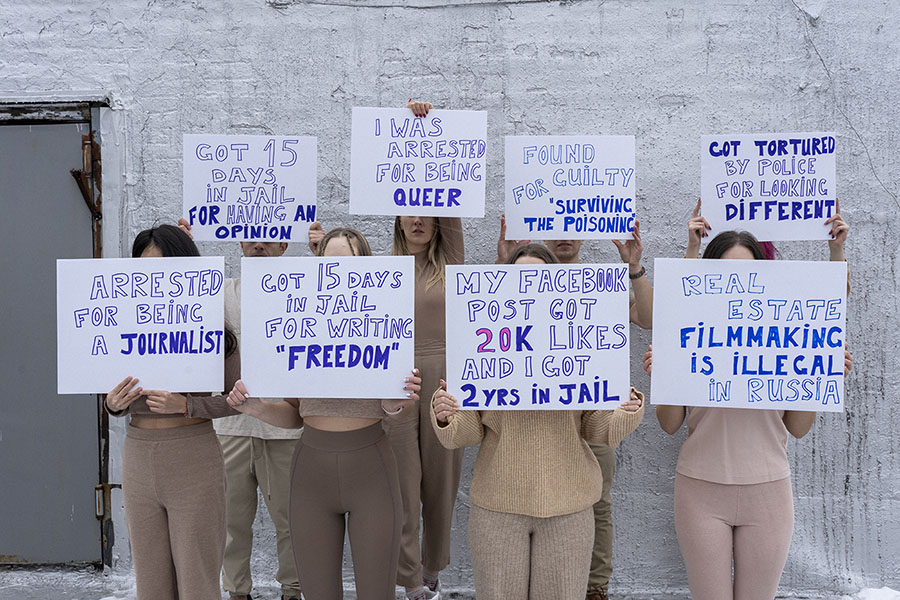
Photography: Maria Kazikhanov (@photoshurup)
Styling: Elena Nigmatullina (@_nevaneva_), Olexandra Kozel-Potatuieva (@alexiskossel)
Make Up: Veronica Volkova (@yourmakeuppoet)
Producing: Nikolay Popov (@kolyan2202)
Models: Tatiana Danilova (@tatiana_dani_lova), Victoria Zhambaltarova (@victoria.yur), Alexandra Bryukhovskikh (@alexagoldman192), Mila De (@milade___), Veronica Volkova (@_loveronica__), Zlata Grek (@zlatochkag), Nikolay Popov (@kolyan2202), Darina G
